Catalogue 2025
Parcourez ci-dessous le catalogue 2025 des Rencontres Internationales, ou effectuez une recherche dans les archives des oeuvres présentées depuis 2004. De nouveaux extraits vidéos sont régulièrement mis en ligne, les images et les textes sont également progressivement mis à jour.
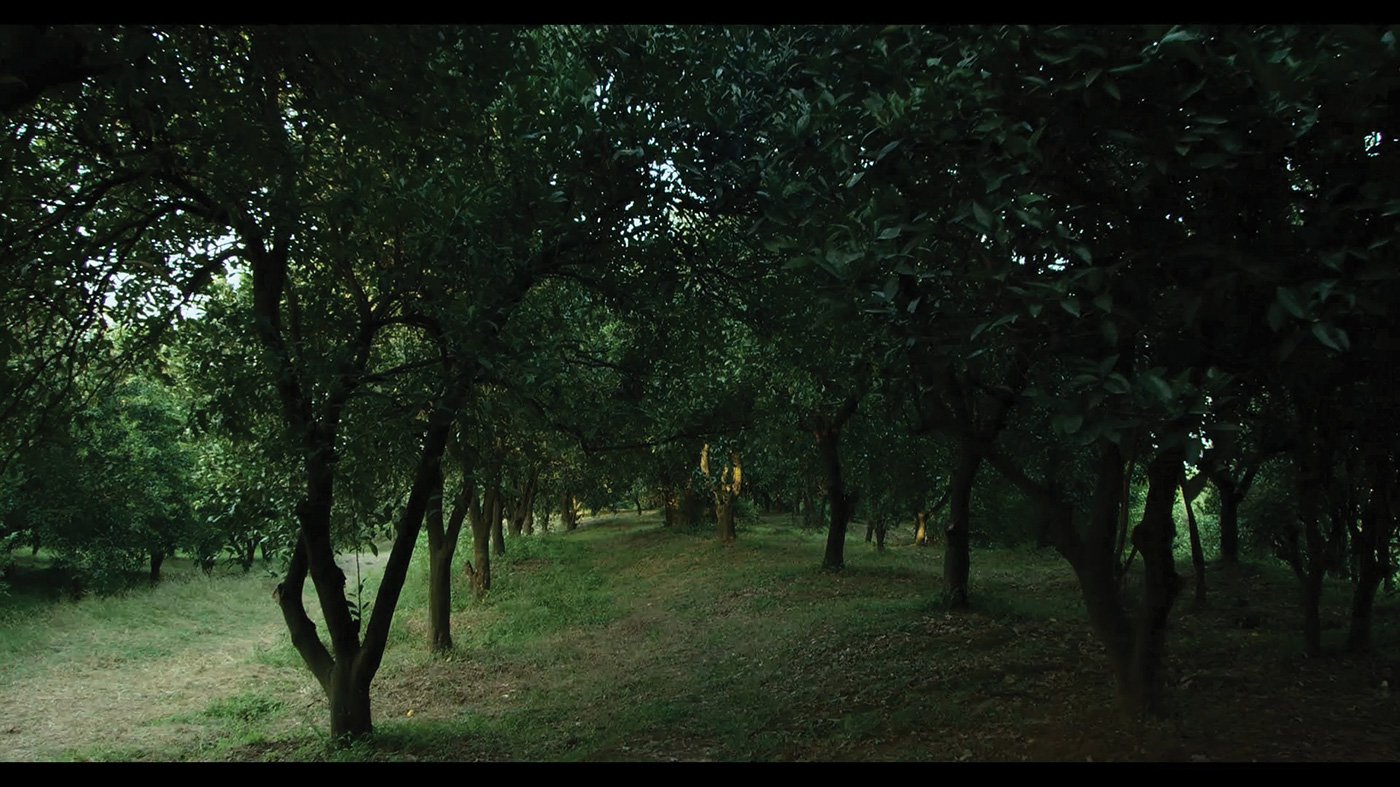
Sina Khani
Watch With the Weary Ones
Doc. expérimental | 4k | couleur | 7:29 | Iran | 2025
Watch with the Weary Ones est un court documentaire qui observe le paysage urbain américain tandis que la cinéaste se laisse doucement glisser vers des souvenirs d’Iran. Il met en regard les surfaces des villes des États-Unis et les sensations de quelqu’un vivant loin de chez soi, suspendu entre deux lieux. Le film réfléchit à la peine que portent celles et ceux qui ont quitté l’Iran en quête d’une autre vie, et ceux qui sont restés et continuent de se battre pour la leur. Il s’agit de tenir deux mondes à la fois, celui qui est devant toi et celui qui ne te quitte jamais, et de tenter de donner un sens à ce poids
Sina Khani (alias Sina Ahmadkhani) est un cinéaste, scénariste et monteur né à Téhéran et basé à Los Angeles. Son premier long métrage a remporté le prix du Meilleur long métrage expérimental international au Portoviejo Film Festival et a reçu distinctions, nominations et sélections au Regina IFF, au Toronto International Nollywood FF, au New York City Indie FF, ainsi que dans de nombreux autres festivals internationaux. Il a récemment obtenu son MFA à la Virginia Commonwealth University et continue à créer des histoires audacieuses, centrées sur les personnages.
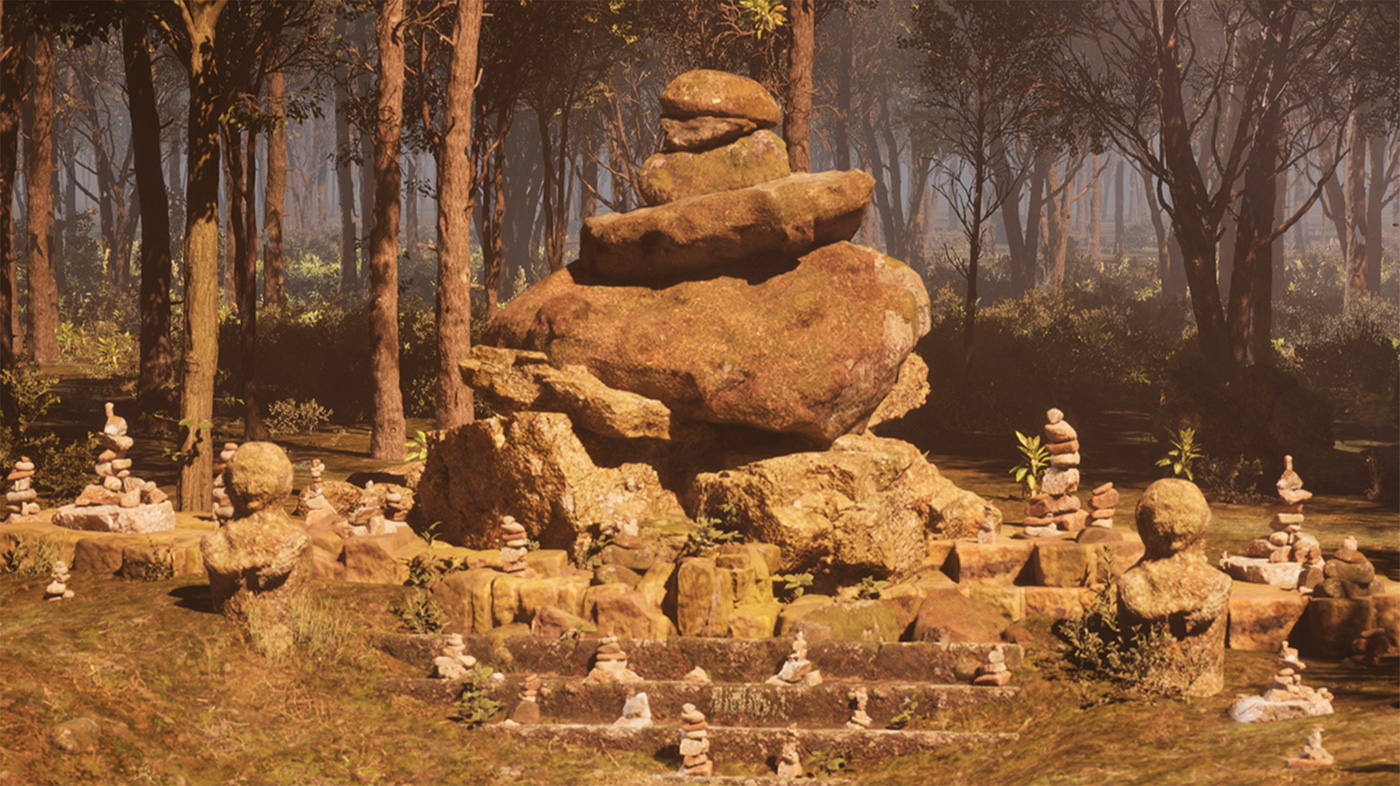
Junghyun Kim, Sami malla
Co:beliefs
VR expérimental | mp4 | couleur | 0:0 | Coree du Sud, Royaume-Uni | 2024
Croyez-vous aux superstitions ? Commonality of Beliefs [Co:beliefs] est une installation numérique interactive qui plonge au cœur du monde fascinant des superstitions à travers des expériences immersives ancrées dans le réel. Elle explore leur rôle dans la cohésion culturelle et interroge la persistance — et la pertinence — de la pensée superstitieuse dans nos sociétés contemporaines. Cette immersion digitale ouvre un espace d’interaction pour des individus et des communautés partageant des croyances similaires, tout en offrant une nouvelle perspective sur la formation des superstitions et sur les émotions que les êtres humains projettent dans le monde numérique, en particulier face à un avenir incertain. Notre démarche a commencé par une question simple : « Pourquoi croit-on encore aux superstitions ? » Cette interrogation a éveillé notre curiosité et nous a conduits à explorer les récits et logiques de la pensée superstitieuse aujourd’hui. Cette recherche a donné naissance à une expérience VR et à un film 360°, conçus dans un environnement narratif proche du jeu vidéo, exprimant visuellement et artistiquement les angoisses et peurs des individus contemporains à travers trois “royaumes”. En rendant sensibles, grâce aux médias numériques, ces émotions complexes issues d’un monde incertain, nous les rendons plus tangibles.
Junghyun Kim (Zoey Kim) est une designer visuelle et éditrice créative basée à Londres. Spécialisée dans les médias numériques, elle crée des expériences immersives et interactives qui mêlent technologie et humanité. Grâce à des outils tels que les moteurs de jeu et les contenus en temps réel, elle explore de nouvelles formes de narration capables d’impliquer les publics et de susciter un dialogue social. Le travail de Zoey invite à une participation active du public : l’interaction numérique devient un moyen d’offrir des perspectives inédites sur la vie contemporaine. S’inspirant des rituels du quotidien et d’objets chargés d’émotion, elle compose des récits qui reflètent des expériences à la fois personnelles et collectives, dans des formes visuelles innovantes.


Francois Knoetze, Amy Louise Wilson
Concept Drift
Installation multimédia | 0 | couleur | 20:0 | Afrique du sud, 0 | 2025
Concept Drift est un jeu interactif et une œuvre vidéo qui rendent visibles l’enchevêtrement entre production du savoir, exploitation coloniale et puissance technologique en Afrique du Sud. Le titre renvoie au terme de drift en apprentissage automatique, qui désigne la manière dont la performance d’un modèle entraîné sur des données historiques devient obsolète lorsqu’il est confronté au réel. Dans le schéma computationnel classique, les données entrent et la règle modélisée algorithmiquement calcule la sortie — mais comprimer ou modéliser un système complexe sans en réduire la complexité demeure impossible. L’œuvre mobilise des modèles et images 3D générés par IA, des collages faits main, du stop-motion, des environnements construits dans un moteur de jeu, des images d’archives, des costumes sculpturaux et des performances pour constituer un archivage des infrastructures et réseaux matériels des algorithmes tels qu’ils s’appliquent aux territoires et aux vies sud-africaines : visualisant un anti-modèle des liens entre l’Afrique du Sud et l’ordre computationnel mondial. En traversant temps et territoires — des compounds miniers sous haute surveillance aux chaînes de production industrielles et aux banlieues résidentielles — le monde du jeu dévoile comment la logique et les pratiques algorithmiques ont pénétré tous les domaines de l’existence, des infrastructures physiques jusqu’aux corps et aux terres. Dans le jeu, les joueurs peuvent interagir avec des matériaux d’archives — illustrations taxonomiques, cartes, modèles — issus de l’itinéraire emprunté lors d’une expédition menée en 1685 par des colons néerlandais à la recherche de cuivre. En réinterprétant et remixant ces images historiques avec des données climatiques contemporaines, les artistes reprennent cette route pour cartographier les paysages collatéraux des mines aujourd’hui désaffectées, traçant une ligne entre la Compagnie néerlandaise des Indes orientales — première multinationale commerciale au monde — et la présence récemment établie d’Amazon au Cap. En tissant un réseau complexe des métabolismes algorithmiques du pays — mines, cartes et matières — l’œuvre interroge les tentatives du modèle de comprimer et d’englober récursivement les indéterminations chaotiques dans sa propre logique.
The Lo-Def Film Factory est une initiative participative de création artistique communautaire fondée par Francois Knoetze et Amy Louise Wilson. Basé en Afrique du Sud, leur travail mêle recherche archivistique, dramaturgie et approches visuelles issues de la vidéo expérimentale, du collage, de l’installation sculpturale, de la réalité virtuelle et des médias émergents. Adoptant une pratique expérimentale qui privilégie la co-création et la valeur du « faire erreur », le projet cherche à ouvrir un espace pour des formes narratives en vidéo et en nouveaux médias. L’initiative accorde davantage d’importance à la transmission des idées et des expériences qu’à des valeurs de production élevées.
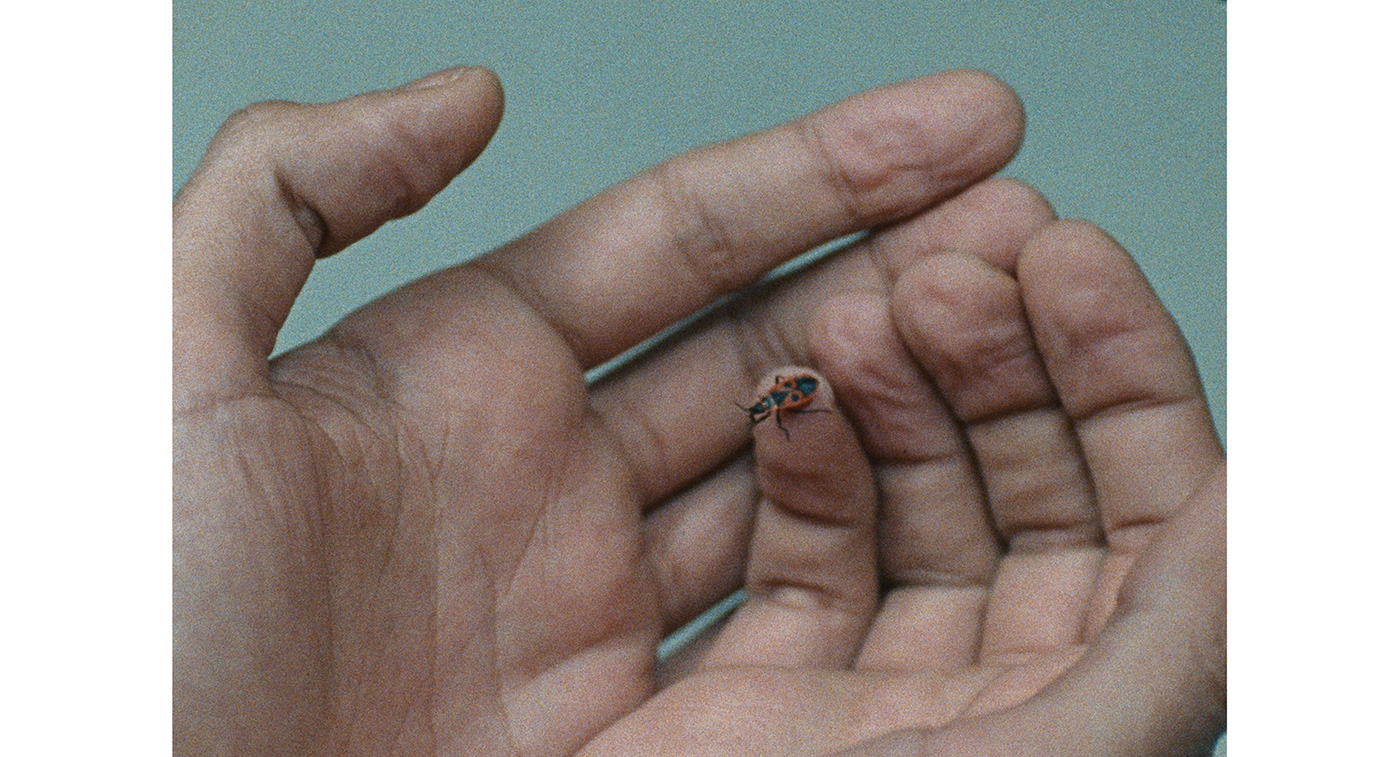
Stefan Koutzev
Restbestand
Documentaire | 16mm | couleur | 19:24 | Bulgarie, Allemagne | 2025
Au cœur du cycle obsédant de la production industrielle de cercueils, le travail humain contraste avec le stock inépuisable que génère la chaîne. À l’ère de la fabrication assistée par ordinateur et de la surexploitation massive des ressources naturelles, Unsold Copies aspire à un moment de repos, un souffle hors de l’assemblage mécanique, tandis que l’humanité ne cesse de s’ensevelir elle-même dans les vestiges d’un monde matériel.
Stefan Koutzev est un cinéaste bulgare vivant et travaillant à Cologne. Son travail se concentre sur des formes narratives situées entre l’écriture scénaristique et les pratiques documentaires, ainsi que sur la réalisation de films expérimentaux et de créations sonores. Ses courts métrages — dont RESTBESTAND (2025), HAUSPAUSEN (2024) et SCHWÄRMEN (2020) — ont été présentés à DOK Leipzig, à l’Odense International Film Festival, au Beijing International Short Film Festival, au Stockholm International Film Festival et aux Rencontres Internationales Paris/Berlin. En 2026, il présentera en première mondiale son premier long métrage, WHY HASN’T EVERYTHING DISAPPEARED YET, une exploration hybride et multilingue de l’appartenance, des origines et des migrations.
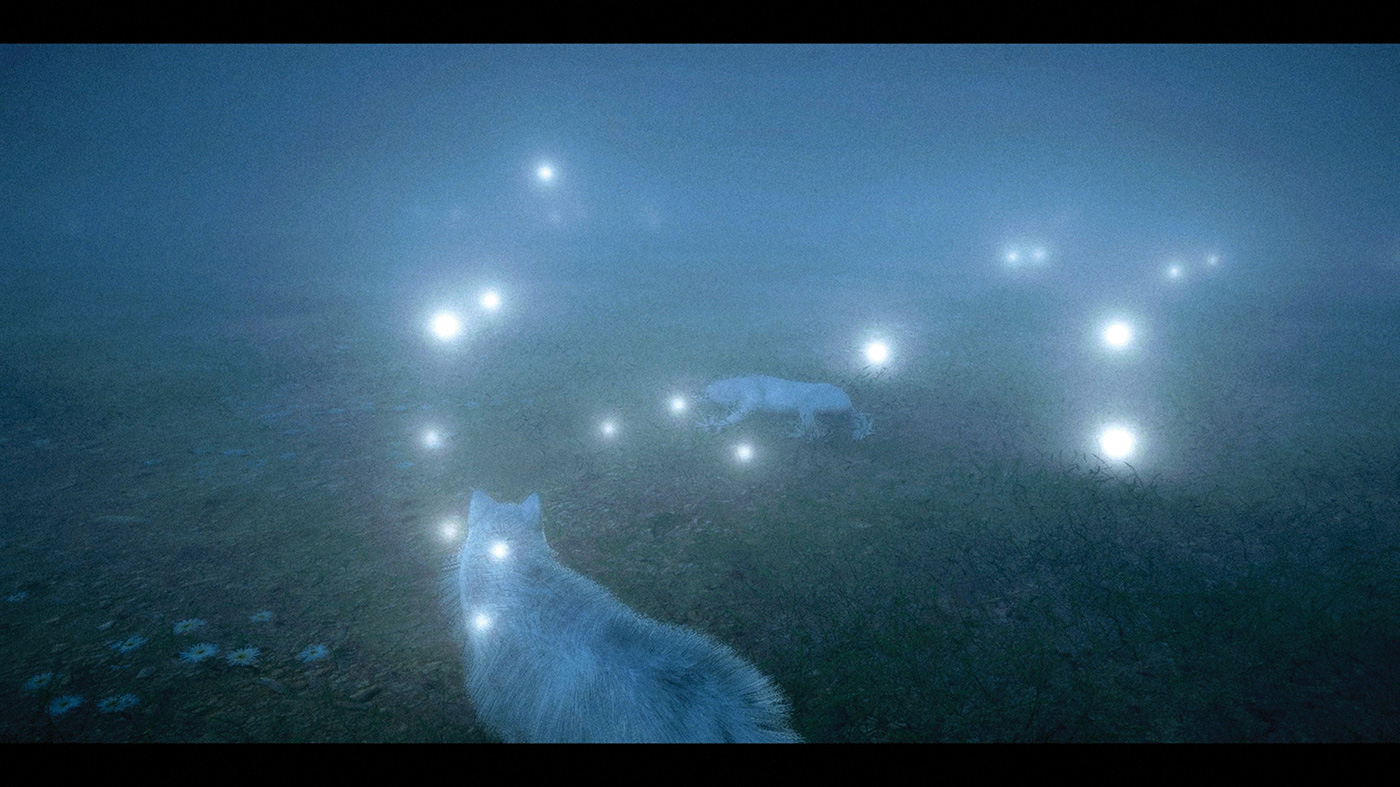

Alan Kwan
Scent
Installation multimédia | 0 | couleur | 30:0 | Hong Kong | 2025
« Scent » est une installation vidéoludique cinématographique dans laquelle le joueur, devenu chien, erre dans une ville ravagée par la guerre, recueillant les âmes des morts. En marchant, en courant et en vous dissimulant au milieu d’atrocités en cours, le jeu vous plonge dans une expérience sensorielle brute faite de peur, d’obscurité, et de brefs moments d’espoir. Débarrassé de tout repère historique ou géographique précis, Scent interroge ce que signifie être témoin sans pouvoir.
Travaillant à l’intersection du cinéma et du jeu vidéo, l’artiste Alan Kwan crée des expériences immersives qui évoquent des sentiments de chagrin, de peur et de sublime. En juin 2025, il a présenté son dernier jeu vidéo, Scent, au Tribeca Festival à New York et à Animafest Zagreb. Une première version du projet avait reçu une Mention d’honneur au Prix Ars Electronica. Entre 2022 et 2024, il a initié et dirigé le développement de The Eyes, une expérience cinématographique en réalité virtuelle réalisée en collaboration avec Kachi Chan, présentée au SXSW Sydney. Ses autres projets ont été exposés internationalement dans des lieux tels que l’Ars Electronica Center (Autriche), le ZKM | Center for Art and Media Karlsruhe (Allemagne), le International Bauhaus Colloquium (Allemagne), le Forum des images (France), la Science Gallery Dublin (Irlande), le Nam June Paik Art Museum (Corée), le Museum of Contemporary Art Shanghai (Chine), le musée M+ (Hong Kong) et les Pearl Lam Galleries (Hong Kong), entre autres. Son travail a été présenté dans des médias tels que Discovery Channel, Popular Science et le Boston Globe. Originaire de Hong Kong, Kwan a obtenu son master au MIT et réside actuellement à Chicago, où il est professeur assistant à la School of the Art Institute of Chicago.
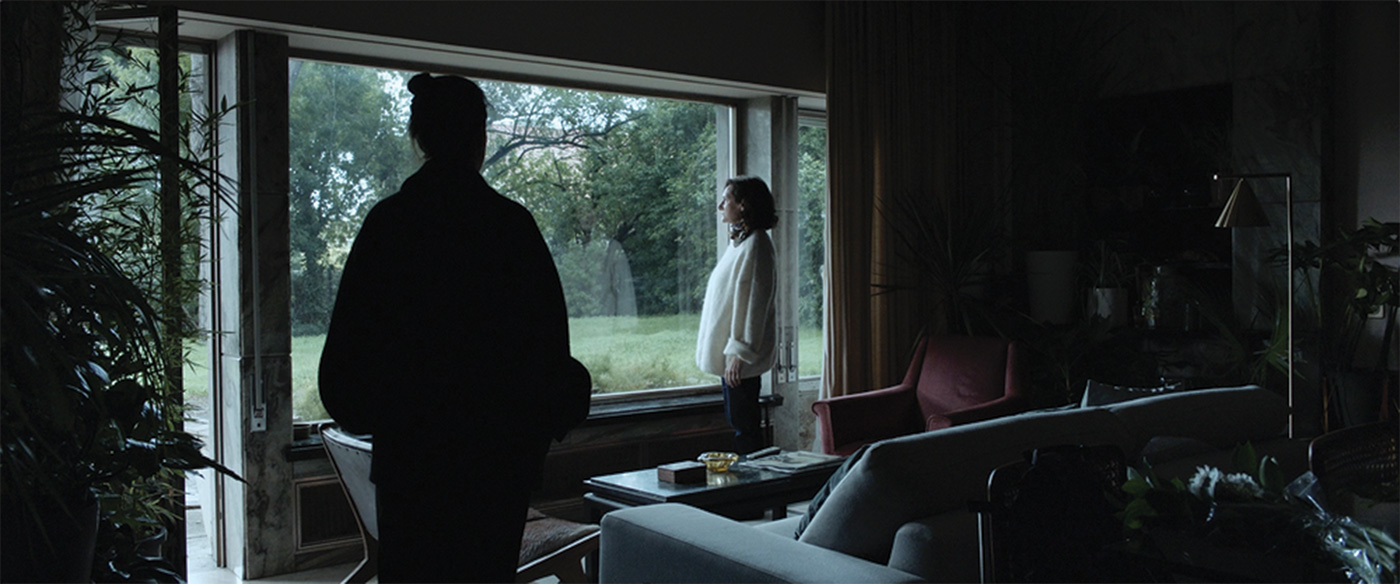
Salomé Lamas
Gold and Ashes | REDUX
Fiction | 4k | couleur | 30:0 | Portugal | 2025
Gold and Ashes s’érige sur des dualités d’échelle internes et externes — ontologiques et épistémologiques — qui se reflètent aussi bien dans les personnages que dans le temps et l’espace où se déroule l’action, ou encore dans le monde qu’ils habitent. Le projet est structuré autour d’un plan concret et d’un plan abstrait, en référence à la subjectivité humaine. Le projet met en scène deux actrices. Le plan concret se déroule dans des lieux de tournage qui servent de décor à la narration, avec dialogues directs et action : une mère et sa fille, situées dans le temps présent. Il met en jeu une sphère sociale définie par des modèles de communication complexes et des conventions — la parenté, les quêtes existentielles — tout en soulignant l’artificialité d’une réalité construite : un dessin habité. Le plan abstrait se situe dans un studio de cinéma qui constitue l’arrière-plan d’une narration para-philosophique, faite de monologues et dépourvue d’action : deux entités déconnectées (dont on ignore si elles ont conscience l’une de l’autre), placées dans un temps indéterminé. Ce plan déploie un labyrinthe mental structuré par des dynamiques de pouvoir relationnelles et des émotions humaines conflictuelles — telles que l’histoire de l’humanité et sa relation à la Terre — tout en soulignant les spéculations autour d’articulations symboliques et imaginaires altérées par la perte du social, du politique et du spirituel. Globalement, le projet se déploie autour des systèmes cognitifs, des modèles sociétaux et des paradigmes civilisationnels. Il adopte une approche qui reconnaît l’évolution humaine tout en exposant les limites humaines à suivre les poétiques et les politiques relationnelles de deux grands récits — [a]naturalisme, [anti]éco/[géo]constructivisme — qui nourrissent la mythologie de l’impact humain sur la Terre (l’Anthropocène). Deux perspectives intemporelles l’animent : le progrès et l’apocalypse, interrogeant notre capacité à reconstruire et orienter la Terre loin des désastres socio-écologiques, et montrant ce que signifie considérer la Terre (et l’humanité) comme un devenir irremplaçable — une trajectoire qui ne peut être dupliquée, refaite ou maîtrisée. Gold and Ashes est une exploration puissante de la condition humaine face à la dévastation, reflétant l’engagement continu de Lamas envers des thèmes difficiles et urgents, abordés par des techniques innovantes qui bouleversent souvent les structures narratives traditionnelles — créant des films non linéaires, fragmentés, ou qui retiennent volontairement des informations clés. Cette méthode renforce la dimension parafictionnelle de son travail, car elle reflète la complexité et l’incertitude des événements réels, où la vérité demeure souvent insaisissable. Dans ce projet, elle explore également l’idée de mémoire subjective et de la manière dont les histoires personnelles et collectives se construisent. Par l’usage de la parafiction, elle met en lumière la fluidité de la mémoire et les façons dont les récits sont façonnés par le point de vue de celui qui les raconte, ainsi que par leurs contextes politiques et sociaux. Gold and Ashes symbolise ainsi la dualité entre destruction et résilience : les « cendres » représentent les vestiges de la guerre et de la perte, tandis que l’« or » incarne l’espoir et la force auxquels les survivants s’attachent pour reconstruire leur vie. Lamas utilise son esthétique singulière pour brouiller les frontières entre réalité et fiction, créant une expérience stratifiée et immersive qui invite le spectateur à questionner sa propre compréhension de la vérité, de la mémoire, et de leur impact dans les sphères privée comme publique.
Salomé Lamas a réalisé plus de trente projets, installés et projetés à l’international, aussi bien dans des salles de cinéma que dans des galeries d’art contemporain et des musées. Chacun d’eux donne accès à une réalité sociale différente, le plus souvent caractérisée par son inaccessibilité géographique ou politique. L’intérêt de l’artiste pour des contextes impénétrables, politiquement ambigus, est guidé par le désir et la nécessité de problématiser une réalité qui, autrement, ne serait pas perceptible. Le réseau de relations qui constitue la trame socio-politique de ses projets devient visible à travers des stratégies de représentation, pour lesquelles elle a adopté le terme de « parafiction ». Plutôt que d’adhérer à une signification indéfinie de la parafiction — pour laquelle il n’existe pas de terminologie véritablement établie — elle en propose une expansion et une re-signification. Dans sa pratique artistique, la parafiction peut être lue à la lumière de son préfixe « para- », où l’on rencontre divers effets de déplacement essentiels à sa compréhension. Dérivé du latin, « para- » indique « à côté de, adjacent à, au-delà de, ou distinct de, mais analogue à » ; dans certaines combinaisons, il peut aussi signifier « erroné, irrégulier », renvoyant à une « altération » ou une « modification » ; plus encore, « para- » implique « séparé, défectueux, irrégulier, désordonné, impropre, incorrect, perversion ou simulation ». Ainsi, la parafiction serait une fiction pervertie, altérée, modifiée ou poussée au-delà de son point de référence, plutôt que contenue dans les limites de la catégorie de fiction. Elle peut également être comprise comme une « simulation » de la fiction, désignant une distorsion de la frontière de ce qui est considéré comme fiction, atteignant ce qui se trouve de l’autre côté : le domaine du non-fictionnel ou la quête du « réel ». Autrement dit, au lieu que la fiction soit utilisée pour brouiller la frontière avec le non-fictionnel, elle devient un moyen d’étendre et de transcender ces frontières. Salomé Lamas part du principe que nous n’avons pas accès à une réalité stable. Nous sommes confrontés à un excès de significations, d’interprétations, d’explications, de manipulations, de (dé)constructions et d’évaluations qui composent les récits et les systèmes dans lesquels nous évoluons. Par conséquent, le besoin de s’approprier l’idée de parafiction découle de la question de savoir comment la subjectivité humaine se forme, en s’appuyant sur la psychanalyse, dans le but d’éclairer et d’élargir des concepts tels que le réel (quelque chose d’inaccessible), la réalité, le symbolique et l’imaginaire. Elle en vient ainsi à travailler à la frontière entre fiction et non-fiction, employant la représentation et la formulation d’hypothèses selon certains critères méditatifs et un code déontologique relatif à ce qui est plausible, assumant consciemment la « tâche du traducteur » — comparable à l’illusionnisme — et en repoussant les limites. Dans ce cadre, elle mobilise diverses stratégies non-fictionnelles — recherche ethnographique, expériences de pensée, réflexivité, re-mise en scène, performativité, entre autres — afin d’explorer les limites de la fiction. Cela apparaît dans le développement de sa méthodologie, où l’on trouve différentes manifestations de parafiction, notamment des situations dans lesquelles personnages et récits fictionnels croisent le monde tel que nous l’éprouvons. La combinaison de ces stratégies, au détriment d’autres aspects spéculatifs, forme une sorte d’hypothèse qui maintient un certain degré d’exactitude vis-à-vis de la réalité, tout en en questionnant l’autorité. La parafiction permet ainsi de prendre une convention et de la déconstruire, de la déformer, d’exposer l’impossibilité de fournir une preuve de la vérité, jusqu’à faire naître des doutes quant à sa validité, tout en offrant néanmoins des raisons de la considérer comme plausible. Salomé Lamas problématise les deux versants de la frontière entre mondes historiques et mondes imaginaires, et enregistre comment ils ont évolué dans le temps, considérant la parafiction comme un outil fondamental de traduction pour définir l’identité, le langage et la culture. Elle intensifie, exagère et spécule sur les manières dont le monde devient sensible, en déclenchant des moments révélant leur propre fabrication, dans un contexte de post-vérité exacerbé par la nature technologique et globalisée de notre époque. Révéler cette transformation constitue une entreprise continue et minutieuse, mais aussi spirituelle, capable de relier la sphère individuelle (privée) à la sphère sociale (publique), et d’introduire ainsi de nouvelles informations et perspectives sur notre passé, notre présent et notre futur. Ainsi, tout en ayant conscience de ses limites et de ses contradictions apparentes, la parafiction contribue à donner forme au chaos de la vie et à lui conférer une signification — dans un compromis entre la réalité et sa fictionalisation.
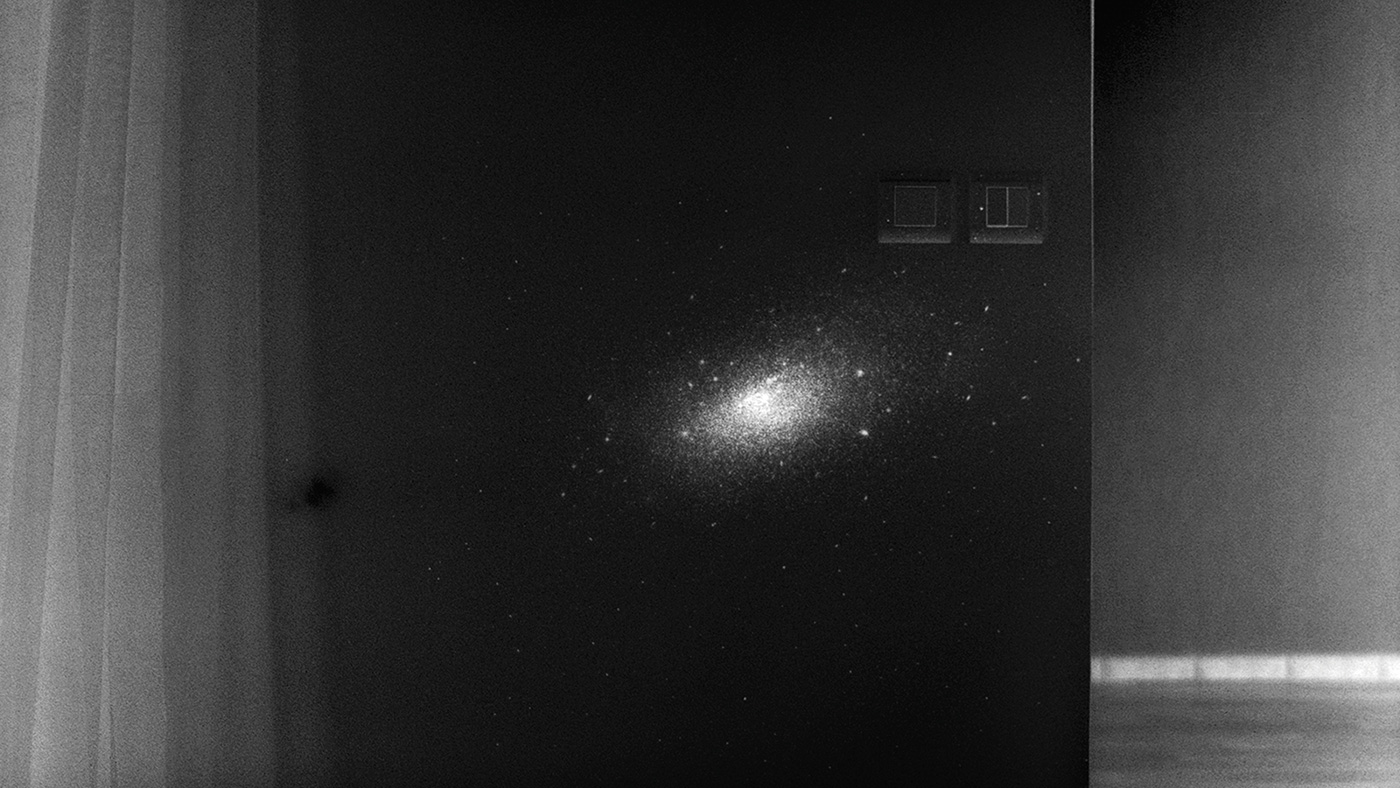
Claire Lance
A Homeward Bound
Fiction expérimentale | hdv | noir et blanc | 9:9 | France | 2024
A travers un plan séquence hypnotique nous sommes transportés au cœur d'une maison, où le noir et blanc négatif révèle un espace indéfini entre mémoire et sidération. Fluctuant sous le vernis social, le regard se métamorphose, la maison dévoile ses secrets, les murs eux-mêmes semblent souffler des récits oubliés et des vérités indicibles.
Claire Lance (née en 1987, France) est une artiste qui utilise des médiums étroitement liés à l’optique humaine. Ses projets explorent la cognition et la persistance des images culturelles dans la perception, à travers la vidéo, l’installation et la photographie. Évoluant dans le temps, les œuvres de Lance fonctionnent souvent comme des tests de Rorschach, révélant ce qui est généralement invisible ou décrit comme intangible ou non objectif. La ville-monde, où les échelles et les dimensions s’interpénètrent en strates successives, crée des espaces virtuels et impalpables, accessibles uniquement au regard. Ces lieux indéterminés mais familiers invoquent la métaphore et la persistance des images que nous portons en nous — individuellement et culturellement — en tant que spectateur·rices. Ses œuvres ont été exposées à la galerie Ofr à Paris, au 39e FIFA à Montréal, au Kurzfilmwoche de Ratisbonne en Allemagne, et ont été publiées à plusieurs reprises dans le magazine britannique Carpark. En 2023, elle est invitée par le CIRM (Centre International de Recherche Mathématiques) pour un workshop intitulé « Maths and Art: Common Creation ». Elle est titulaire d’un master en Pratique et Théorie de l’Art Contemporain de l’Université Paris 8 Sorbonne. Elle a collaboré avec différents réalisateurs en tant que directrice de la photographie sur des tournages, ainsi que pour des commandes auprès de titres de presse tels que L’Obs, Trax ou Technikart.
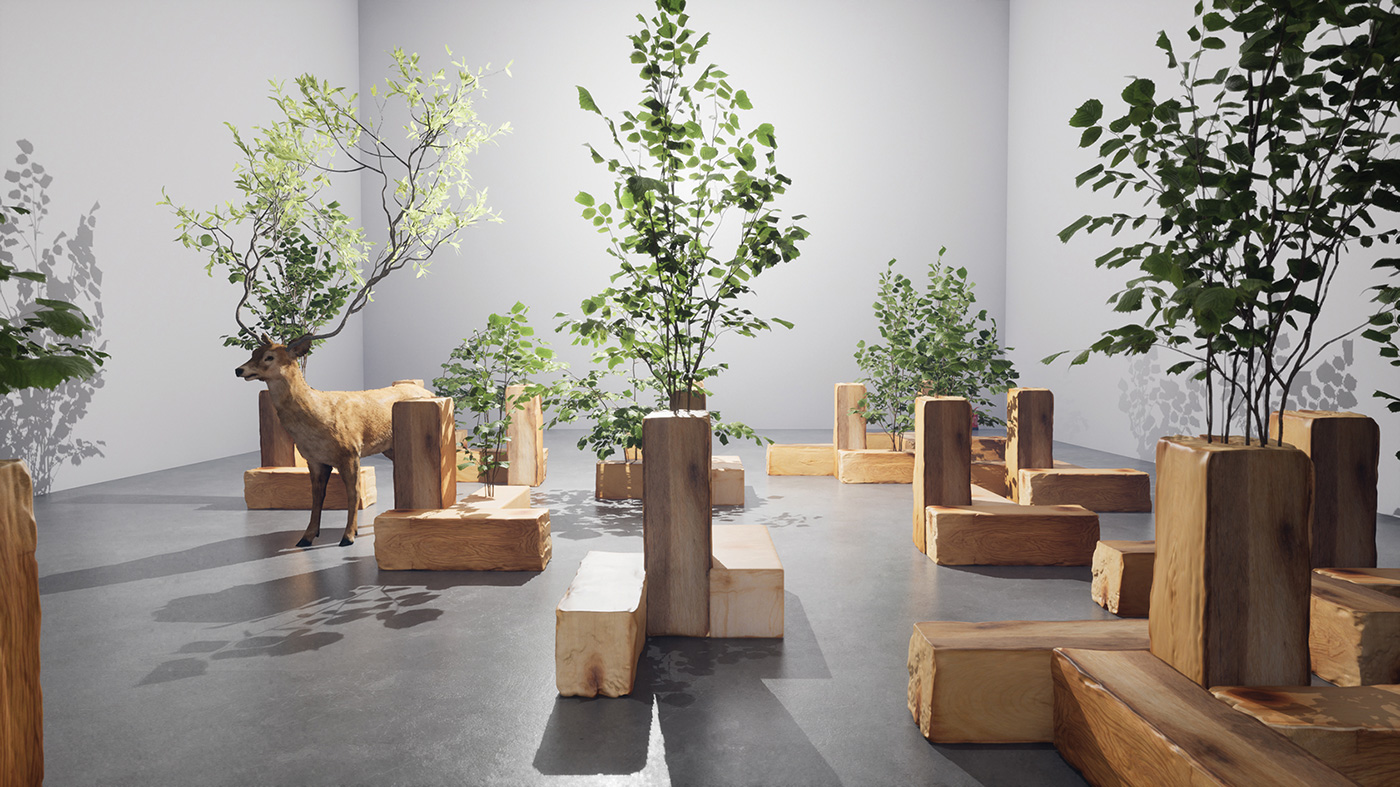
Jaewook Lee
Toward Entropy
VR expérimental | 0 | couleur | 0:0 | Coree du Sud, USA | 2025
"Toward Entropy 360" est une expérience immersive en film 360° qui invite le public à pénétrer dans un monde circulaire où les gestes monumentaux du land art rencontrent la persistance silencieuse de la nature. Cette œuvre réinvente des earthworks historiquement importants, non pas comme des monuments figés, mais comme des écologies fragiles et évolutives, façonnées par le temps, le climat et la mémoire. Les plantes reprennent possession du sol, l’eau monte, et des formes familières se dissolvent, remettant en question la permanence de l’ambition humaine. À la fois poétique et critique, le projet examine la manière dont la culture et l’environnement s’entrecroisent — comment l’art inscrit sa trace sur le territoire et comment la terre, à son tour, répond. En reconsidérant l’entropie non comme une perte, mais comme un processus génératif, la vidéo 360° ouvre un espace de réflexion sur l’art, l’histoire et l’éthique environnementale dans un monde de plus en plus défini par le changement.
Jaewook Lee est un artiste des nouveaux médias dont la pratique s’étend à l’animation 3D/CGI, la réalité virtuelle (VR), la réalité augmentée (AR), le jeu vidéo et les installations interactives. Son travail explore des histoires spéculatives et des écologies immersives, créant des environnements qui interrogent les paradigmes culturels, écologiques et sociaux tout en mettant en avant l’agence de la nature à travers des technologies numériques avancées. Les œuvres de Lee figurent dans les collections permanentes du Gyeonggi Museum of Modern Art et du Jordan National Gallery of Fine Arts. Il a présenté des expositions personnelles au Museum of Contemporary Art Taipei (2024), au Museo de Antofagasta pendant le festival SACO9 au Chili (2020), ainsi qu’au SVA-NYC Art Platform à Shanghai (2017, 2019). Il a participé à des événements internationaux tels que le Currents Art + Technology Festival (2025), l’Athens Digital Arts Festival (2024), l’ARKO Art & Tech Festival (2021) et Mindful Joint à l’Art Sonje Center (2017). Ses films ont été projetés dans des festivals qualifiant aux Canadian Screen Awards, dont le Toronto International Nollywood Film Festival (2024) et le Montreal International Animation Film Festival (2023). Diplômé de la Korea National University of Arts (BFA) et titulaire de deux MFA (Carnegie Mellon University ; School of Visual Arts), il a enseigné à l’Université de Chicago, à la SVA et à SUNY Old Westbury. Il est actuellement professeur associé à Northern Arizona University, où il dirige le programme académique officiel Unreal Engine.
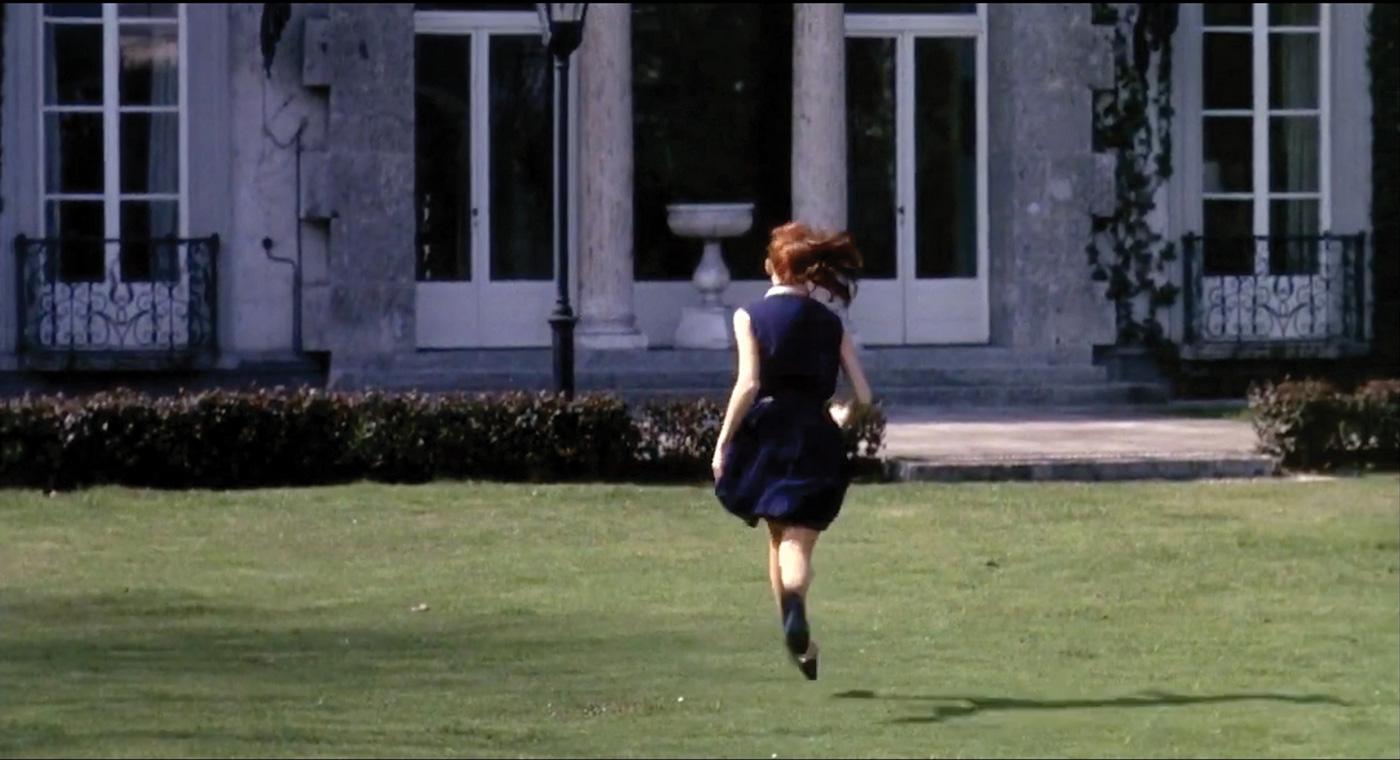

Cathy Lee Crane, John Di Stefano
Tra
Vidéo | hdv | couleur | 5:35 | USA, Canada | 2024
‘Tra’ est une ode au cinéaste italien Pier Paolo Pasolini. ‘Tra’ synthétise le récit de son film ‘Teorema’ (1968) en mettant en évidence ses moments interstitiels. L'acte de courir, qui apparaît tout au long du film, est isolé et utilisé pour exposer les courants sous-jacents du film.
John Di Stefano est artiste/ cinéaste, écrivain et commissaire d’exposition. Son travail met en relation l’intime et le social, le quotidien et l’histoire, à travers des formes hybrides de pratiques documentaires et la forme essayistique. Son œuvre aborde souvent son passé d’immigrant à travers une perspective queer, notamment dans son long métrage You Are Here (2009), présenté en première au Festival International du Documentaire de Marseille. Ses œuvres primées ont également été présentées à la Videonale (Bonn), à la Whitechapel Gallery, à Tensta Konsthall, au Musée d’Art Moderne de Barcelone, à Para/Site (Hong Kong) et à l’Anthology Film Archives. Ses écrits critiques apparaissent dans diverses publications internationales. Il enseigne à l’Université Concordia (Montréal). Cathy Lee Crane est cinéaste expérimentale ; son travail puise dans les archives historiques pour produire des films lyriques relevant de l’histoire spéculative. Lauréate d’une bourse Guggenheim, elle a bénéficié en 2015 de la première rétrospective de son œuvre à la National Gallery of Art (Washington D.C.). Ses films primés — notamment Pasolini’s Last Words (2012) — ont été projetés à la Viennale, à la Cinémathèque Française, au BFI et à Arsenal/Berlin. Son intérêt pour les frontières l’a conduite à réaliser Crossing Columbus (2020), consacré à la ville frontalière de Columbus, au Nouveau-Mexique, un film soutenu par la Rockefeller Foundation et le Harun Farocki Institut à Berlin. Elle enseigne à Ithaca College (New York).
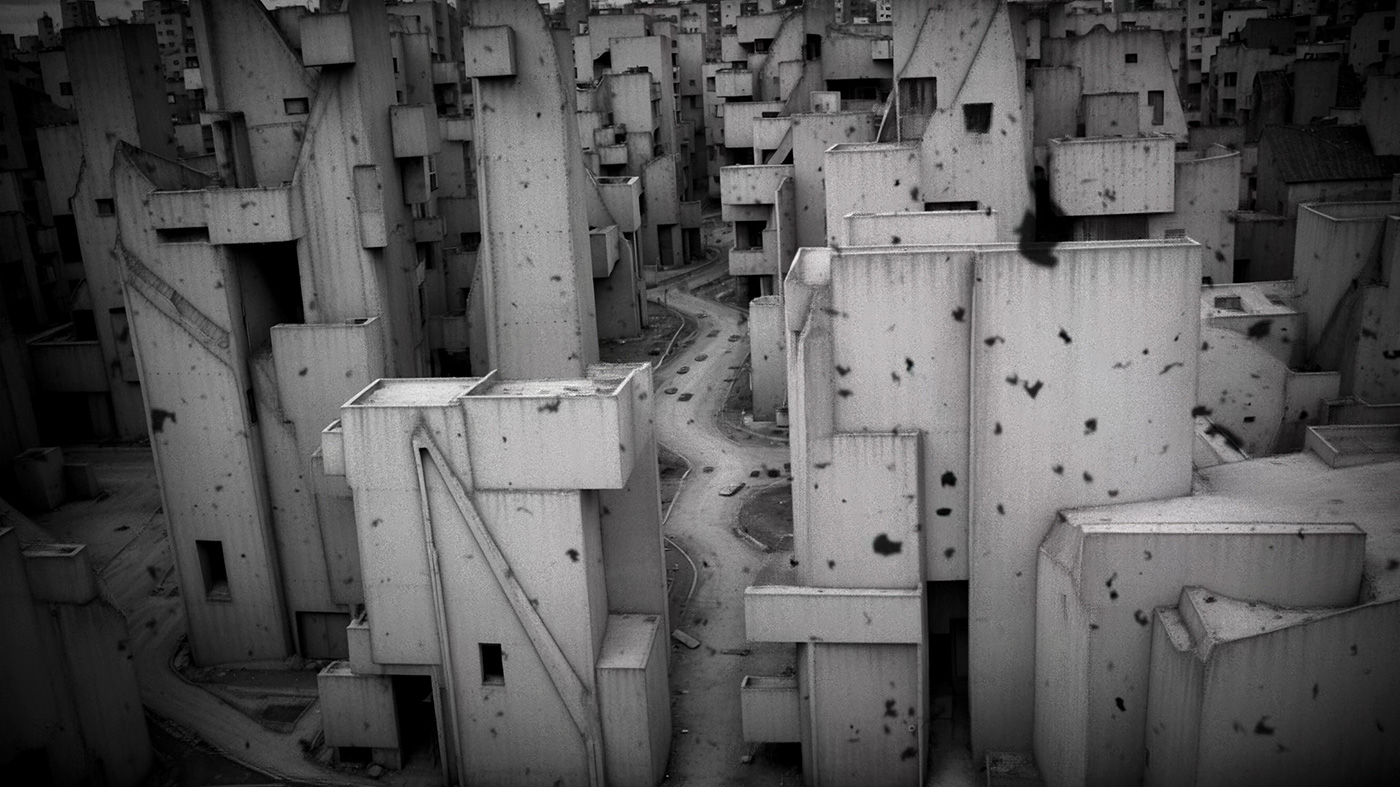
Thomas Leon
To Ashes
Vidéo | 0 | couleur | 5:6 | France | 2025
To Ashes explore les seuils entre réalité et hallucination machinique, interrogeant les technologies contemporaines de génération d’images — en particulier l’intelligence artificielle — et leur influence sur notre perception du réel. Réalisée selon un processus hybride mêlant modélisation 3D et outils de génération basés sur l’IA, la vidéo se déploie en un long travelling continu à travers une mégastructure brutaliste en perpétuelle métamorphose. Les formes architecturales se délitent, se transforment ; des particules semblables à de la cendre s’élèvent dans l’air. Cette désagrégation est accompagnée d’un paysage sonore expérimental, où synthétiseurs analogiques et voix altérées font affleurer l’idée d’un effondrement latent. Peu à peu, l’architecture cède la place à des structures cristallines instables. La réalité vacille. À la fin, quelque chose rompt, glisse, disparaît. Il faut que tout brûle.
Thomas Léon développe sa pratique en fusionnant cinéma, arts graphiques et images issues des nouvelles technologies. Il crée des films, des installations vidéo et sonores immersives, ainsi que des dessins en grand format. Son oeuvre explore les interrelations entre mémoire, sensualité, expériences intimes et imaginaire, en s’appuyant sur des fictions, qu’elles soient sociales, urbanistiques, climatiques etc. Il s’inspire notamment de la science-fiction et de la littérature utopique et développe le plus souvent ses travaux par l’intermédiaire des outils contemporains de création d’images (modélisation 3D, IA, etc.). Il participe régulièrement à des projections ou expositions en France et à l’étranger: « Listening to Transparency » au Minsheng Art Museum de Shanghai (Chine, 2017), « Cruces Sonoros : Mundos Posibles » au MAC de Santiago de Chile (Chili, 2016), « Rendez-vous 11 » à l'Institut d'art contemporain à Villeurbanne (2011) et à la South African National Gallery à Cape Town (Afrique du Sud, 2012). Il a notamment suivi les résidences : Drawing Factory organisée par le CNAP et le Drawing Lab (Paris) en 2021 ; la résidence à Taiwan, organisée par le Grame, centre national de création musicale (Lyon) et le Digital Art Center (Taipei) en 2011. Ses oeuvres sont notamment présentes dans les collection du CNAP et de la Fondation Louis Vuitton. Thomas Léon vit et travaille à Montreuil.
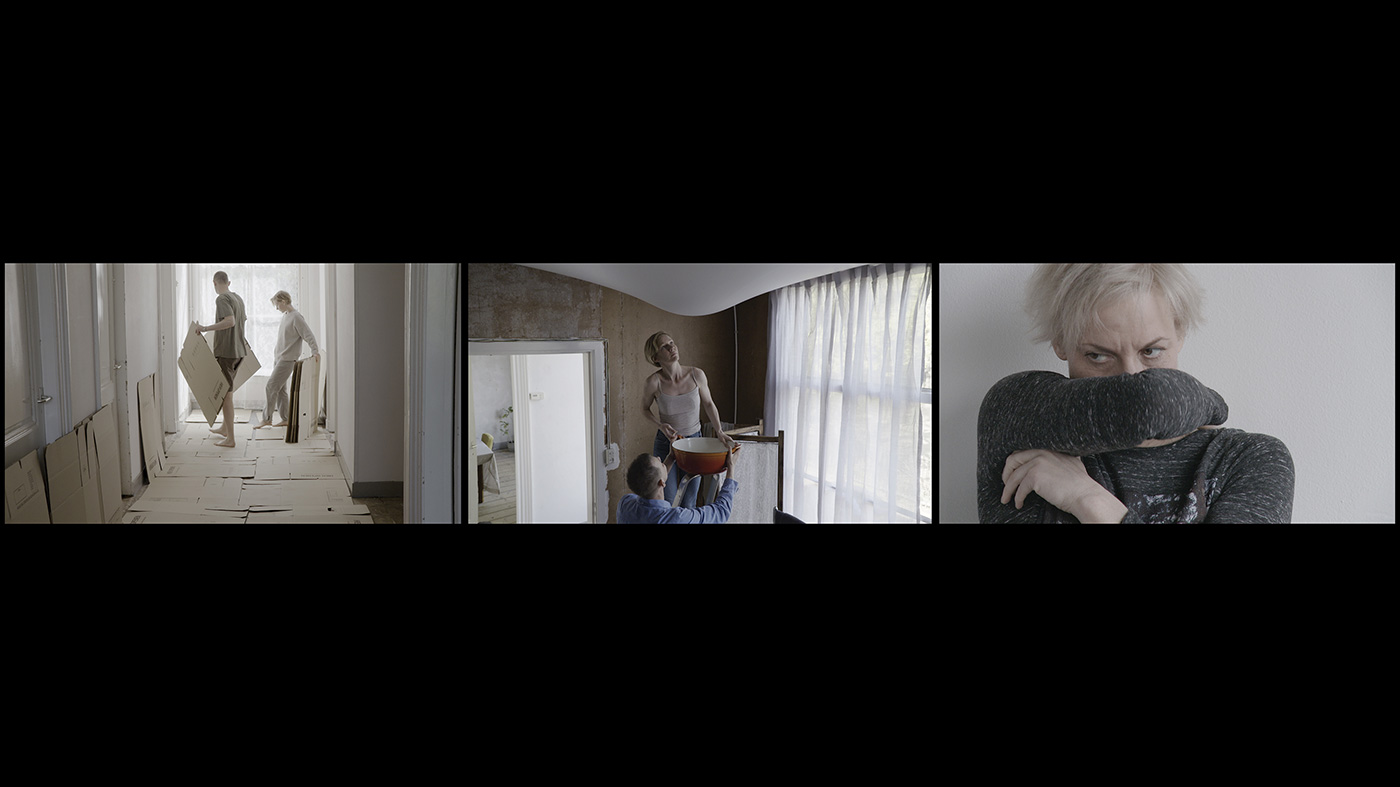
Leopold Emmen
Another Woman - film adaptation (work in progress)
Installation vidéo | mp4 | | 13:6 | Pays-Bas | 2025
« Another Woman – film adaptation » est un film en trois volets qui présente des scènes intimes entre trois personnages — deux femmes et un homme — au cours d’une rupture. Le film explore un monde de fiction et de performance dans une narration cinématographique et scénographiée, où trois images sont montrées simultanément. Le style visuel se concentre autant sur les corps performants que sur leur environnement. Des émotions sous-cutanées affleurent à travers des interactions tactiles, lorsque les personnages touchent et éprouvent leur place au sein des propriétés physiques de l’espace. Les murs, le plafond, le sol, les rideaux et le mobilier forment des obstacles, des limites et des vides qui confrontent les protagonistes à la situation et à l’état d’esprit dans lesquels ils se trouvent. Les intérieurs deviennent des miroirs de leurs mondes intérieurs, à la fois surréels et intuitivement reconnaissables. « Another Woman – film adaptation », 2025, est une re-mise en scène de l’installation spatiale « Another Woman », 2022. Nous présentons un extrait de 13 min 6 s du film final, dont la durée estimée sera de 70 minutes.
Leopold Emmen est une collaboration entre la cinéaste Nanouk Leopold et l’artiste visuel Daan Emmen. Dans notre travail, nous expérimentons le film comme une expérience spatiale et cinématographique dans laquelle le visiteur joue un rôle actif. À travers les caractéristiques d’un lieu et le comportement de nos protagonistes, nous cherchons à rendre tangible la manière dont une présence influence la vie et les relations à l’autre. Une invitation ouverte à explorer le monde physique et mental des personnages eux-mêmes. En créant une conscience de la façon dont l’espace, le son et l’image en mouvement peuvent se conjuguer dans une expérience incarnée et approfondie, nous souhaitons bousculer notre regard conditionné. Réfléchir à la manière dont nous voyons le monde, dont nous nous voyons dans ce monde, et dont nous nous voyons les uns les autres.
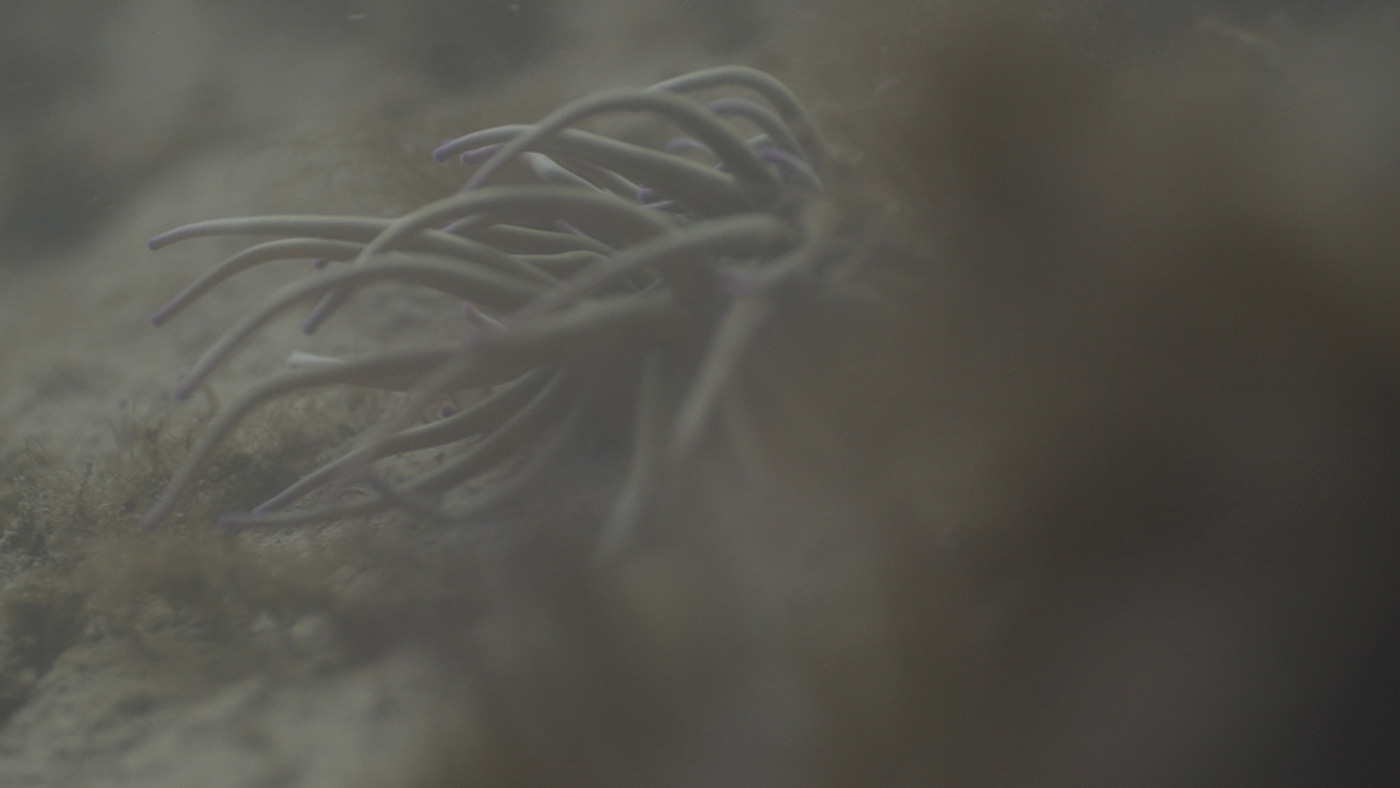
Sonia Levy
We Marry You, O Sea, as a Sign of True and Perpetual Dominion
Doc. expérimental | 4k | couleur | 19:28 | France, Royaume-Uni | 2025
We Marry You, O Sea aborde Venise et sa lagune “par en dessous”, en déplaçant l’attention vers les processus bio-géomorphologiques immergés — vitaux, altérés, continuellement en mutation — plutôt que vers les récits, maintes fois racontés, de l’histoire politique et militaire de la ville. Le tournage sous-marin ouvre de nouvelles voies de connaissance des matérialités de la lagune et révèle un environnement fracturé, troublé, qui complique les récits historiques dominants, ceux qui ne commencent qu’au-dessus de la surface. En s’accordant au rythme du flux et du reflux, on commence à percevoir les interactions entre terre et eau, vie et décomposition, et les processus intimes qui composent ce milieu. Observer les formes de vie rendues possibles dans cet espace aquatique endommagé oblige à sonder les transformations profondes qu’il a subies. We Marry You O Sea as a Sign of True and Perpetual Dominion tire son titre de la formule prononcée lors du rituel vénitien des Épousailles de la mer, célébré chaque année le jour de l’Ascension entre le XI? et le XVIII? siècle : le Doge, figure souveraine de la République, “épousait” symboliquement la lagune en y jetant un anneau d’or, proclamant ainsi la domination de Venise sur les eaux. L’artiste revisite cette relation multiséculaire entre la ville et son milieu aquatique, en interrogeant l’héritage persistant de ces volontés de maîtrise. Comment imaginer d’autres futurs pour Venise si l’on commence par éprouver la lagune comme un espace vivant, habité par une multiplicité de formes de vie et de mort ? Dans la lagune — un espace façonné depuis des siècles par des interventions humaines continues — zones humides et infrastructures sont depuis longtemps imbriquées. L’essor de Venise comme carrefour commercial et centre d’innovation navale au Moyen Âge a entraîné des aménagements hydrauliques majeurs pour maintenir des eaux peu profondes à des fins défensives. Mais au XX? siècle, les impératifs de modernisation ont transformé des pans entiers des marais en raffineries de pétrole et en l’un des plus grands terminaux à conteneurs d’Italie, faisant de la lagune une frontière industrielle. L’anthropologue urbaine Clara Zanardi a montré comment ces mutations ont reconfiguré les divisions sociales tout en provoquant une dégradation écologique irréversible ayant profondément bouleversé les formes de vie lagunaires. Le film restitue ces histoires de modernisation en entrelaçant de rares photographies d’archives provenant du Fonds photographique Giacomelli de Venise avec des images sous-marines du présent. L’inversion négative noir-et-blanc appliquée aux vues immergées accentue la portée historique des archives, reliant passé et présent et laissant affleurer les futurs possibles dans les eaux contaminées de la lagune. Une bande sonore originale — mêlant chœurs humains et enregistrements subaquatiques — renforce encore les correspondances entre espaces immergés et domaines humains. La composition saisit les pulsations de la lagune et les empreintes de l’activité industrielle : des sons aquatiques noyés par le vacarme des embarcations aux battements réguliers des machines au milieu de la marée montante. Elle révèle ainsi les profondes imbrications entre les activités humaines et les faibles profondeurs de la lagune.
Sonia Levy est une artiste et cinéaste, d’ascendance berbère et polonaise. Son travail, fondé sur des enquêtes situées et interdisciplinaires, examine les implications des logiques occidentales d’expansion et d’extraction, et la manière dont ces forces s’inscrivent dans la transformation et la gouvernance des mondes hydrosociaux. Sa pratique cherche à sonder les seuils qui ont façonné — et continuent d’influencer — les conditions nécessaires à l’épanouissement du vivant.
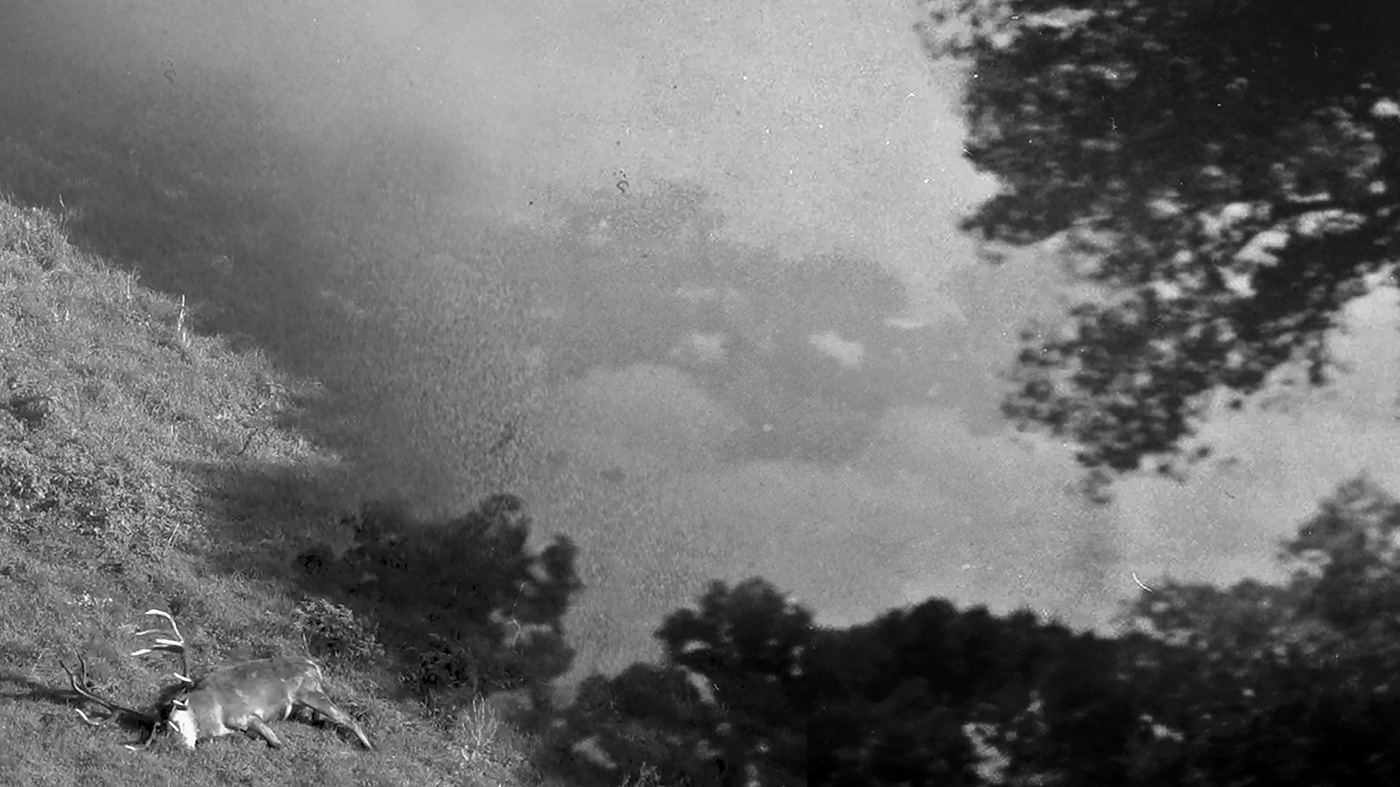

Jan Locus
Intruders
Film expérimental | 0 | noir et blanc | 6:5 | Belgique | 2025
Intruders explore la frontière entre science-fiction et réalité, en interrogeant les thèmes de la colonisation inversée, de l’écologie et de l’impact humain sur l’environnement. Le film propose une réflexion introspective sur la fascination — et la peur — que l’Occident nourrit à l’égard d’entités extraterrestres. Dans un long panoramique, des paysages montagneux et des images brumeuses d’animaux apparaissent de manière éthérée, presque spectrale. Locus n’utilise pas d’images filmées au sens classique, mais des vidéos de chasse trouvées en ligne et des photographies noir et blanc d’observations d’OVNI des années 1950 et 1960. Bien que ces images trahissent leur origine par leur texture granuleuse, l’artiste a retiré les OVNI afin de fondre les paysages restants en un ensemble continu. Le phénomène de morts animales inexpliquées, souvent associé aux témoignages d’OVNI, devient ici une métaphore de l’influence humaine sur la nature. Locus mêle photographie et vidéo pour construire un récit complexe qui insiste sur l’ambiguïté entre réalité et fiction. Le film réfléchit aux « intrus » dans la nature, s’inspirant de visions dystopiques du futur, et invite le spectateur à considérer les relations complexes — et souvent troublantes — entre humains, technologies et milieux naturels.
Déployant son travail entre film, photographie et son, il aborde souvent le paysage comme un outil de construction des identités nationales et sociales, en se concentrant sur des environnements transformés par l’extraction et l’industrialisation. Dans sa dernière œuvre, il explore la tension entre found footage, photographie fixe et image en mouvement, soulignant l’ambiguïté de notre perception du réel et de la fiction. Ses films ont été présentés dans de nombreux festivals internationaux, notamment l’International Film Festival Rotterdam (IFFR), le Festival international du court métrage d’Oberhausen, les Rencontres Internationales Paris/Berlin, Le FIFA – Festival international du film sur l’art (Montréal), Kasseler Dokfest, Asolo Art Film Festival, Stuttgarter Filmwinter, CROSSROADS Film Festival (San Francisco), ANTIMATTER Media Art (Victoria), Festival ECRÃ (Rio de Janeiro), PROYECTOR Plataforma de Videoarte (Madrid), SPLIT Film Festival, ONION CITY Experimental Film Festival (Chicago), BISFF Beijing International Short Film Festival, et Flight / Mostra Internazionale del Cinema di Genova, entre autres. Locus vit et travaille à Bruxelles.
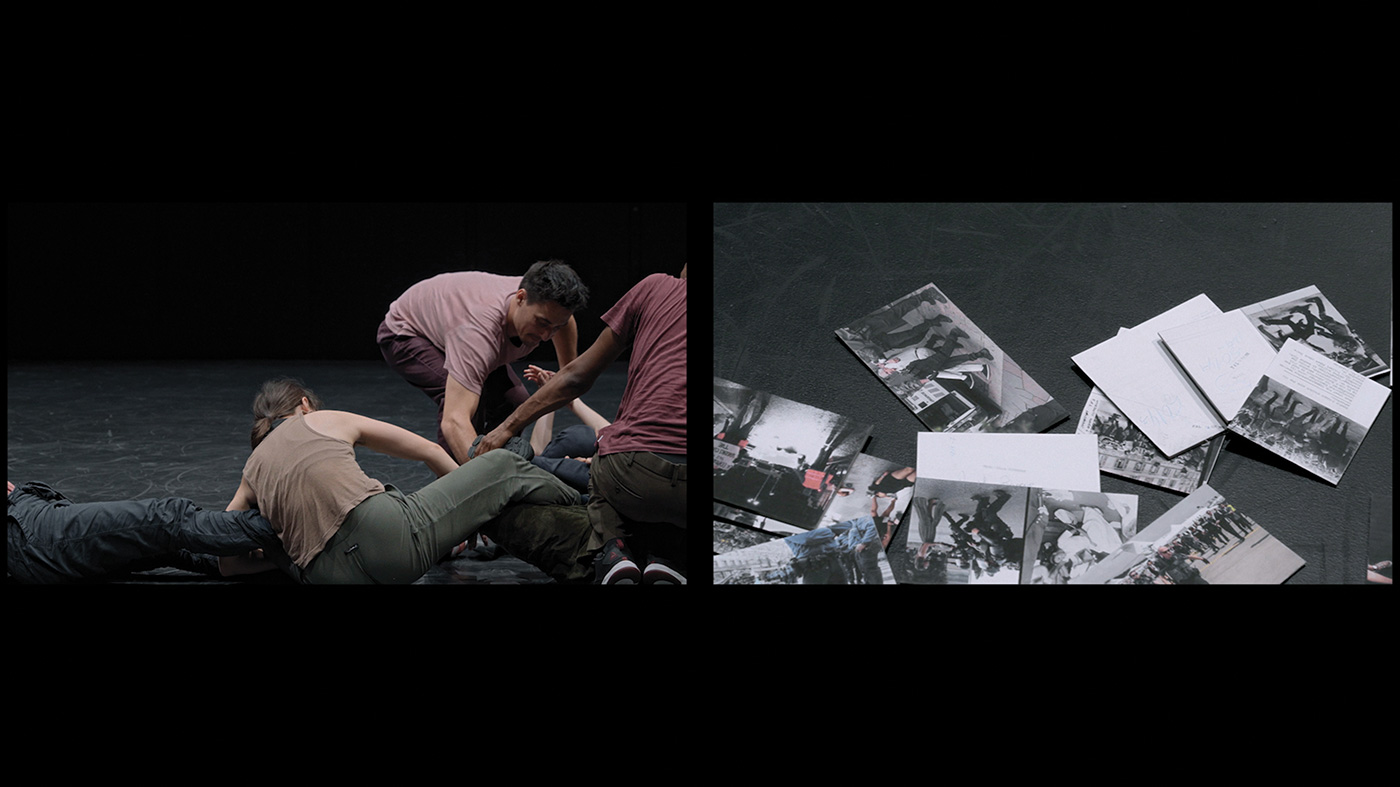
Gabriela Löffel
Nous n’avons pas besoin de nous connaître à l’avance
Installation vidéo | hdv | couleur | 20:15 | Suisse | 2024
« Nous n’avons pas besoin de nous connaître à l’avance » est une œuvre vidéo hybride, qui alterne des moments de performance dansée, des images d'archives et des citations textuelles. Gabriela Löffel s'appuie sur l'aspect politique de l'espace public pour construire sa réflexion et développe un essai visuel qui met en scène la "performativité des corps dans cette zone d'action politique". En puisant dans l'œuvre écrite de Judith Butler, philosophe et théoricienne du genre états-unienne qui a travaillé sur la question du corps et de sa représentativité normée dans nos sociétés contemporaines, Löffel donne véritablement une corporéité aux questions soulevées par l'auteure. Les citations issues de l'œuvre de Butler sont données à voir en parallèle aux éléments dansés et archivistiques de la vidéo. La caméra presque fixe permet d'examiner en détail les gestes lents et précis des danseur·euse·s. Les déplacements de l'appareil sont presque imperceptibles, tant ils sont subtils. L'artiste et le chorégraphe Cédric Gagneur ont étroitement collaboré afin de définir les divers mouvements qui composent la chorégraphie : ils proposent une abstraction des gestes de résistance ou de révolte, tirés des images d'archives issues de la collection des Archives contestataires de Genève. La lenteur et le silence habitent la pièce et donnent suffisamment d'espace au corps pour qu'il puisse se déployer de manière individuelle ou en collectivité. L'œuvre propose ainsi une dialectique du potentiel de revendication dans l'espace public. Œuvre coproduite par le Fonds cantonal d'art contemporain, Genève, avec le Fonds d'art contemporain de la Ville de Genève pour le programme MIRE.
Gabriela Löffel travaille principalement avec des médias temporels et se concentre sur les zones grises des structures politiques et financières, ainsi que sur les infrastructures. Le déplacement et la traduction de l’immédiat documenté vers les champs de l’interprétation et de la mise en scène sont des stratégies qu’elle utilise dans son processus de travail. Une méthode qui donne souvent lieu à des projets à long terme et lui permet de créer des espaces de questionnement et de proposer des ruptures avec les récits linéaires. Elle s’intéresse à l’obliquité du sujet et de son contexte. C’est dans ce décalage, induit par sa manière d’aborder les sujets, que son travail ouvre des réflexions sur le sens de la compréhension d’un monde lorsque l’on prend conscience de la fragmentation de nos connaissances. Son travail a été présenté dans des institutions et des galeries dont MAST Bologne, Aargauer Kunsthaus, EMAF Osnabrück, Galería Metropolitana Santiago, Dazibao Montréal, la Biennale Kochi-Muziris et autres. Gabriela Löffel est lauréate du Swiss Art Award, du Lewis Baltz Research Fund, de la bourse Landis+Gyr, ainsi que d'autres.
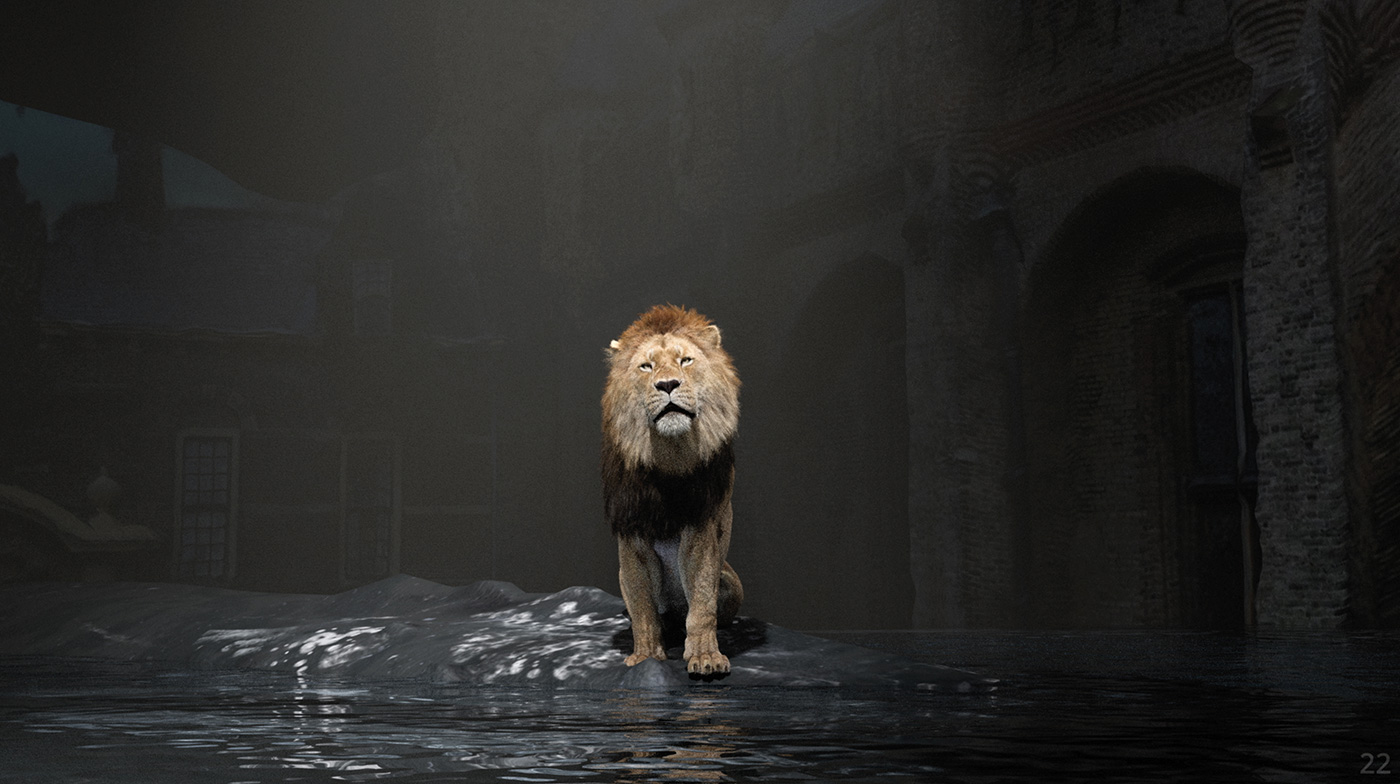

Margit Lukács, Persijn Broersen
Lion S Court
Vidéo | 0 | couleur | 20:0 | Pays-Bas | 2025
Lion’s Court est un court opéra cinématographique dans lequel le Binnenhof — siège du Parlement néerlandais à La Haye — est réimaginé comme une scène virtuelle où l’histoire se dissout dans le mythe. Inspirés par la découverte de restes de lions datant du XIV? siècle sur le site, et par la figure des baleines échouées interprétées comme des présages, Lukács & Broersen ont collaboré avec le compositeur et politologue Bram Kortekaas pour réinterpréter la vision goethéenne de la rédemption dans Faust. Au centre de cette œuvre se tient le lion Faust, interprété par le baryton Michael Wilmering — un despote en quête d’une liberté qui se dévore elle-même, miroir d’une ambition impériale au bord de l’effondrement. Les artistes se sont également appuyés sur les écrits de 1650 de Johan de Witt, Grand Pensionnaire républicain, dont les mots sont portés par la baleine (alto-mezzo Carina Vinke), surgissant des fondations inondées du Binnenhof. De Witt soutenait qu’une véritable république ne doit pas être gouvernée selon les caprices d’un seul, mais fondée sur les principes de liberté et d’égalité — les bases mêmes de la démocratie. Dans Lion’s Court, un hortus conclusus numérique se déploie : un monde fluide et clos où pouvoir, morale et prophétie convergent, et où les mythes du passé résonnent au cœur des politiques du présent.
Margit Lukács et Persijn Broersen sont un duo d’artistes basé à Amsterdam, qui explore les enchevêtrements entre nature, culture et technologie. Leur travail comprend des films, des animations numériques et des installations spatiales qui interrogent la manière dont les médias façonnent notre perception du monde naturel. Diplômés du département de design graphique de la Gerrit Rietveld Academie, ils ont poursuivi un MFA au Sandberg Institute et ont été artistes en résidence à la Rijksakademie d’Amsterdam. La pratique de Broersen & Lukács s’ancre dans la théorie des médias, l’histoire de l’art et la mythologie. S’appuyant sur des sources cinématographiques, scientifiques et historiques, ils réinventent paysages et phénomènes naturels au travers d’environnements numériques stratifiés. Leur travail réfléchit souvent aux politiques de représentation et à l’appropriation de la nature, reconfigurant les récits dominants par des formes de narration fragmentées et multiperspectivistes. Leurs installations et leurs films ont été largement exposés à l’international, notamment au Stedelijk Museum Amsterdam (NL), au Centre Pompidou (FR), à FOAM (NL), au MUHKA (BE), au Centraal Museum (NL), au MacKenzie Art Gallery (CA), à la WRO Biennale (PL), à la Biennale de Sydney (AU), aux Rencontres Internationales (HKW Berlin, Louvre/Grand Palais/CWBP, Paris) et à la Biennale de Wuzhen (CN). En 2024, ils ont représenté les Pays-Bas à la Biennale de Gwangju. Leur film I Wan’na Be Like You a été nommé pour le Tiger Award/IFFR 2024.
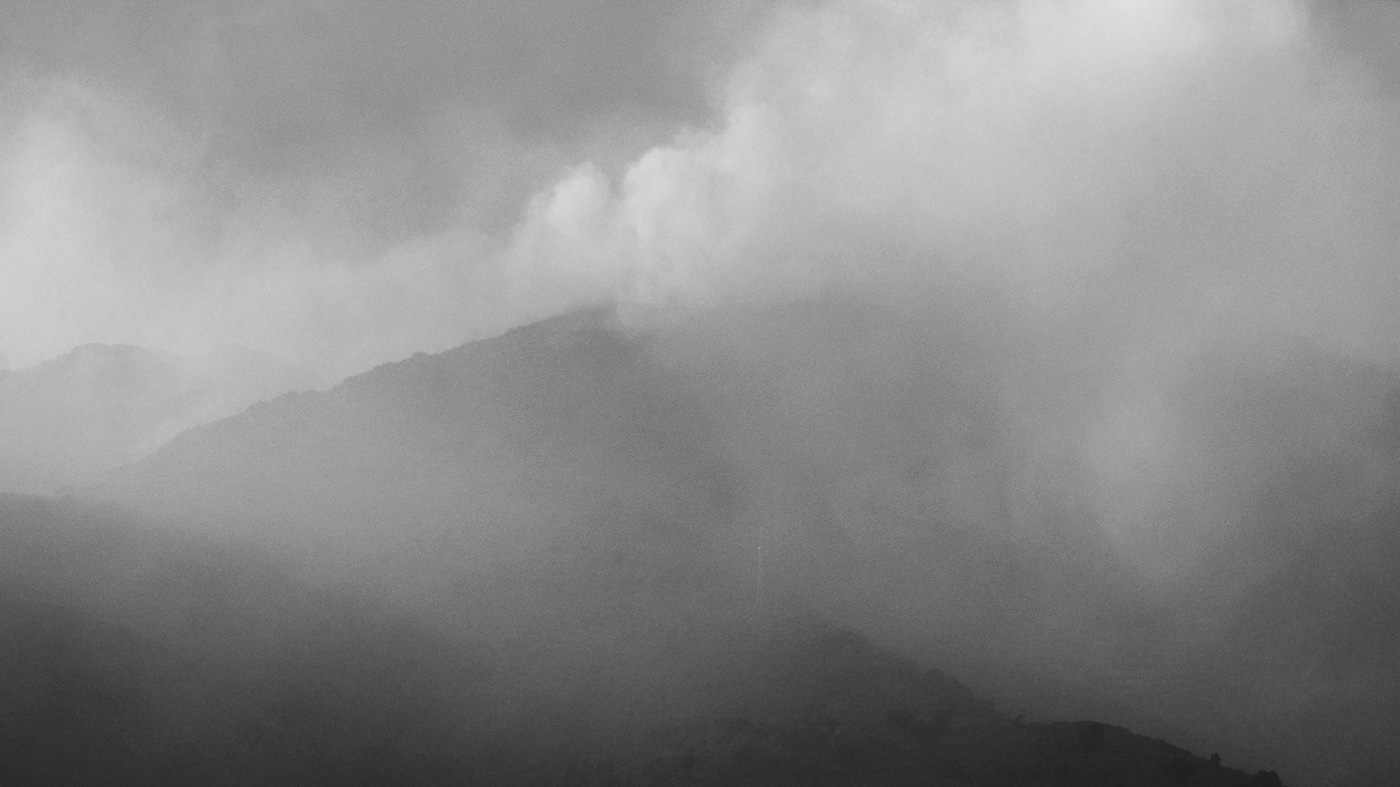
Martí Madaula
Tramuntana
Film expérimental | dcp | noir et blanc | 18:27 | Espagne | 2025
Dans une zone reculée du nord de l’Espagne, le vent porte un nom : la Tramuntana. La Tramuntana prend ce qu’elle veut — vêtements, arbres, bateaux, et les habitants du paysage, qui vivent sous la menace constante d’être emportés par sa force. Ce film est un portrait lyrique de ce vent furieux, tissé à partir des récits transmis par les villageois.
Martí Madaula est un artiste et cinéaste basé à Madrid. Il est titulaire d’un diplôme en beaux-arts de l’Université de Barcelone, d’un Master of Visual Arts de la LUCA School of Arts de Gand (Belgique) et d’un Master of Fine Arts en film, vidéo, nouveaux médias et animation de la School of the Art Institute of Chicago. En 2019, il reçoit le Prix extraordinaire des Beaux-Arts de l’Université de Barcelone. En 2021, il obtient la prestigieuse bourse de la Fondation “la Caixa” pour poursuivre ses études aux États-Unis. Son dernier film, Tramuntana, a connu sa première mondiale au Museum of Modern Art (MoMA) de New York, dans le cadre de Doc Fortnight 2025, le festival international du film et des médias non fictionnels du MoMA. Son premier film, The Living Wardrobe, a été présenté en première mondiale dans la section Opening Scenes de Visions du Réel 2024, l’un des plus importants festivals internationaux de documentaire et de cinéma du réel. Madaula a participé à des résidences artistiques dans des institutions prestigieuses telles que le Centre Pompidou (Paris) ou la Haus der Kulturen der Welt (Berlin). Il a exposé son travail dans des expositions personnelles et collectives à l’international.
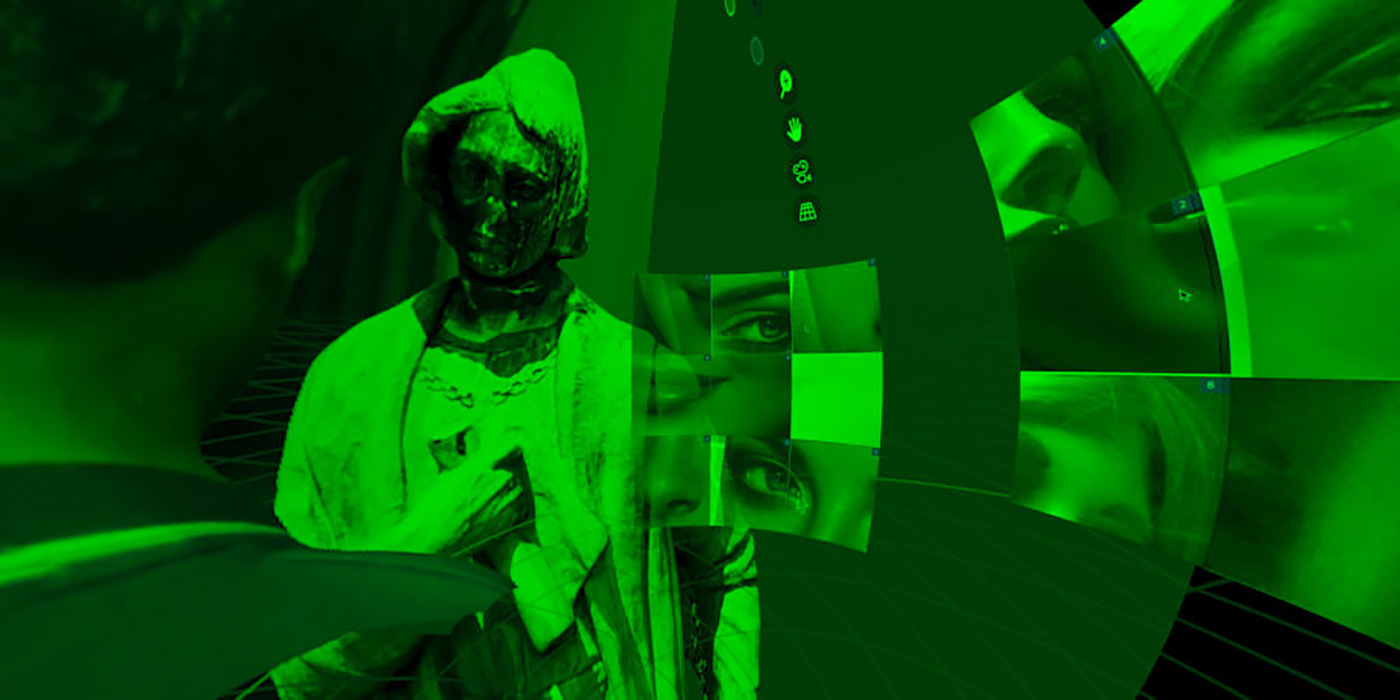
Viviana Mamani Cori
Cristóbal Condori: Una Nariz de Ficción
VR expérimental | 4k | couleur | 7:12 | Bolivie | 2025
Il y a presque quatre ans, le collectif Wiphala a escaladé la statue de Christophe Colomb à La Paz, en Bolivie, et lui a brisé le nez d’un seul coup. La même année, ma sœur a subi une opération esthétique pour changer le nez hérité de notre père — mais à sa sortie du bloc opératoire, elle ne se reconnaissait plus dans le miroir. À El Alto, en Bolivie, une tendance croissante à la rhinoplastie vise à modifier ce que beaucoup appellent le « nez de condor », portée par des cliniques proposant des réductions et par un paysage urbain saturé de panneaux publicitaires, de mannequins et d’affiches montrant des visages blancs, des cheveux clairs et des nez retroussés. La statue de Christophe Colomb prend vie après avoir été frappée au nez. Désorientée, elle erre dans les rues d’El Alto, revisitant son passé et confrontant le contraste entre sa mémoire coloniale et la présence des corps autochtones qui habitent la ville. Au fil de son parcours, elle explore sa propre identité fracturée et celle de la ville, jusqu’à se retrouver face à face avec le buste d’un homme aymara, porteur d’une esthétique et d’un imaginaire chola. Cette rencontre symbolise la résistance aux canons hégémoniques de beauté et la possibilité de réécrire l’histoire depuis une perspective décoloniale. L’expérience se déploie en réalité virtuelle, permettant au·à la spectateur·rice d’accompagner la transformation de la statue — et une réconciliation avec nos propres nez.
Viviana Mamani Cori est une artiste aymara, migrante, à la peau brune, née à El Alto, en Bolivie. Sa pratique émerge d’une formation non académique façonnée par la migration, la rue et les esthétiques populaires de l’Altiplano, où l’architecture chola et les DVD piratés ont modelé dès tôt sa sensibilité pour le glitch, le bruit et les images clandestines. Elle a ensuite poursuivi des études en architecture et en cinématographie, élargissant sa pratique au cinéma expérimental, à la photographie, à la performance et aux nouveaux médias. Son travail tisse archives intimes, mémoire territoriale et gestes incarnés qui confrontent les récits coloniaux autour de la beauté, de l’identité et de la représentation autochtone. Elle a réalisé des œuvres qui ont circulé dans la rue, dans des espaces communautaires, des galeries et des festivals à travers l’Amérique latine et l’Europe. Elle a été sélectionnée pour Berlinale Talents Buenos Aires 2022 et a participé à la résidence artistique DIP en 2024, où elle a bénéficié de l’accompagnement de cinéastes latino-américaines de premier plan telles que Lucrecia Martel et Maite Alberdi. Son projet Cristóbal Condori: Una nariz de ficción a reçu de nombreuses distinctions en photographie, art contemporain et cinéma expérimental. En 2025, elle reçoit le Prince Claus Seed Award pour une trajectoire explorant l’identité, la migration, la mémoire et le corps comme territoire politique de résistance. Elle vit aujourd’hui à El Alto, en Bolivie, où elle poursuit et développe sa pratique artistique.


Melanie Manchot
Line Of Sight (The Tower)
Vidéo | 0 | couleur | 12:7 | Allemagne, Suisse | 2025
Tournée dans une tour de télécommunications désaffectée, autrefois abritant des équipements militaires secrets, cette œuvre prolonge mon enquête sur les montagnes et leurs architectures en tant qu’espaces d’enchevêtrements entre humains et milieux naturels. Elle revient plus précisément encore au village alpin d’Engelberg, où je réalise des travaux depuis 2010. Dans Line of Sight, la caméra explore une structure désertée, un espace laissé derrière. Comme si chacun avait quitté les lieux en plein geste, les environnements portent les traces d’une vie passée, depuis longtemps disparue. À l’intérieur comme à l’extérieur, la caméra observe cette architecture déroutante au fil de longs panoramiques et travellings, jusqu’à un moment d’envol qui dévoile la structure — comme flottant dans l’espace. Lorsque la tour était en fonction, elle assurait de multiples usages, notamment celui d’abri et de refuge durant les tempêtes. Une pièce remplie de vieux matelas témoigne de ces moments de danger. Le titre Line of Sight renvoie à ces tours perchées au sommet des montagnes, se faisant face à distance et permettant d’anciennes formes de communication. Avec l’évolution technologique, ces tours sont désormais des dinosaures : solitaires, obsolètes, devenant ainsi des symboles d’endurance, de résistance et de modes d’échange révolus. En 2025, cette tour est en cours de transformation en un espace dédié au « divertissement de montagne » — accentuant la dichotomie d’industries alpines qui ne cessent d’accroître la fréquentation des sommets et des glaciers, contribuant de fait à l’accélération du changement climatique.
Artiste visuelle et cinéaste basée à Londres, Melanie Manchot utilise la photographie, le film, la vidéo et le son pour mener des enquêtes approfondies sur nos identités individuelles et collectives. Son travail interroge et mobilise des actes de soin, de résistance et de communalité afin d’engager les urgences sociales et politiques de nos sociétés. Ses films explorent des formes innovantes de narration, portés par une compréhension aiguë du pouvoir du cinéma à traiter des enjeux cruciaux et à produire un impact profond. Toutes ses œuvres filmées reposent sur une recherche ancrée dans des lieux spécifiques, et les paysages montagneux constituent un motif récurrent permettant d’aborder la fragilité des environnements dont nous avons la charge. Les œuvres de Manchot ont été présentées dans des expositions en musées et galeries à l’international, et elle prépare actuellement une vaste exposition personnelle au Royaume-Uni pour le début de l’année 2026. Son premier long métrage, STEPHEN, commandé par la Liverpool Biennial, aborde le jeu d’argent, les addictions, la guérison et la santé mentale à travers une articulation entre fiction narrative et documentaire. Distribué en salles par Modern Film en 2024, il continue d’être présenté en exposition sous forme d’installation multi-écrans. Manchot travaille actuellement à son deuxième film, Self Storage, tandis qu’un autre long métrage – un hybride fiction/documentaire intitulé One Day As A Tiger, est en développement.
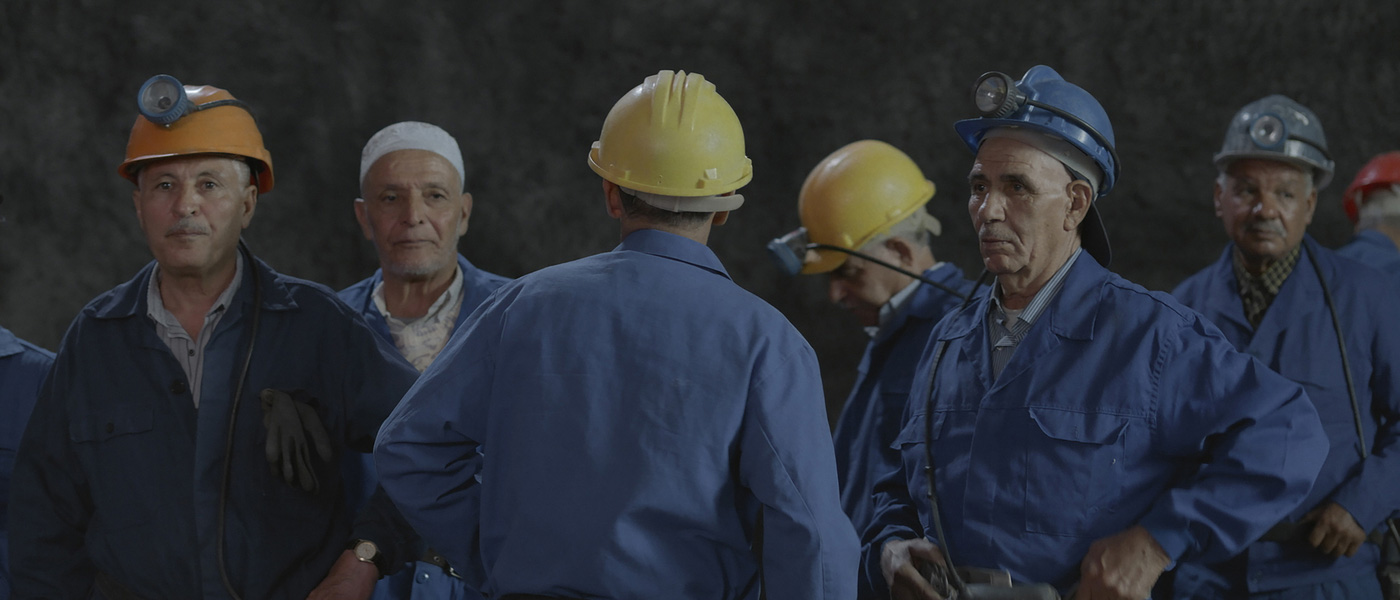
Randa Maroufi
L’mina
Documentaire | dcp | couleur | 26:0 | Maroc, France | 2025
Jerada est une ville minière au Maroc où l’exploitation du charbon, bien que officiellement arrêtée en 2001, se poursuit de manière informelle jusqu’à aujourd’hui. "L’mina" reconstitue le travail actuel dans les puits en utilisant un dispositif de décor conçu en collaboration avec les habitant·e·s de la ville, qui se mettent en scène dans leur propre rôle.
Née en 1987 à Casablanca (Maroc), Randa Maroufi est artiste plasticienne et réalisatrice. Elle est diplômée de l’Institut National des Beaux-Arts de Tétouan, de l’École Supérieure des Beaux-Arts d’Angers, et du Fresnoy – Studio National des Arts Contemporains. Pensionnaire de l’Académie de France à Madrid, Casa de Velázquez en 2018 et de la Villa Médicis à Rome en 2026. Ses films Le Park (2015) et Bab Sebta (2019), primés dans plusieurs festivals, marquent le début d’une trilogie consacrée à trois cités marocaines. L’mina (2025) en est le dernier volet.

Lukas Marxt, Vanja Smiljanic
AMONG THE PALMS THE BOMB or: Looking for reflections in the toxic field of plenty
Doc. expérimental | mov | couleur | 85:0 | Autriche, Allemagne | 2024
La mer de Salton, dans le sud de la Californie, est un écosystème unique. En seulement quatre ans, son niveau d’eau a baissé d’un bon demi-mètre ; avec une profondeur maximale de dix mètres, on peut aisément calculer le moment où elle devrait se retrouver à sec. Et cela ne concerne encore que l’aspect global, lié au réchauffement climatique et aux modifications du climat local. La Salton Sea est également singulière parce que les États-Unis y ont testé de nombreuses bombes atomiques durant les phases finales de la Seconde Guerre mondiale et de la guerre froide — d’abord en préparation des bombardements d’Hiroshima et de Nagasaki, puis comme entraînement pour des missions qui, fort heureusement, n’ont jamais eu lieu. Dans AMONG THE PALMS THE BOMB, Lukas Marxt et Vanja Smiljani? s’intéressent particulièrement à cet aspect de l’histoire régionale. Le film commence dans l’Utah, d’où décollaient les avions avant de trouver leur cible dans la zone supposément isolée autour de la Salton Sea. À Wendover, un musée expose notamment des maquettes de « Fat Man » et « Little Boy », les deux seules bombes atomiques jamais utilisées en temps de guerre, ainsi qu’une fosse de chargement où les avions étaient équipés — un dispositif auquel Marxt a d’ailleurs consacré un court film en 2019. Depuis de nombreuses années, il étudie la situation du sud de la Californie, que l’on peut, à bien des égards, qualifier d’extrême. L’agriculture intensive, fondée de manière radicale sur les monocultures, a tout submergé. Marxt et Smiljani? découvrent qu’une alliance s’est formée dans ce contexte : des travailleurs agricoles sans papiers venus d’Amérique latine trouvent refuge dans les réserves amérindiennes. AMONG THE PALMS THE BOMB donne la parole à des experts locaux qui éclairent le paysage et son histoire ; le réalisateur recherche également des voix discordantes, notamment au sein de la tribu des Torres Martinez Desert Cahuilla Indians, victimes d’un génocide au XIX? siècle. Leurs descendants se souviennent du temps où nombre de plantes aux pouvoirs curatifs — et indissociables d’une vie en symbiose avec la nature — poussaient autour des eaux salées de la Salton Sea. Aujourd’hui, la région appartient aux buissons salins, et sous la surface sommeille l’uranium d’une guerre froide sur le point de ressurgir. « Des temps effrayants », dit quelqu’un. (Bert Rebhandl)
Lukas Marxt (*1983, Autriche) est un artiste et cinéaste vivant et travaillant entre Cologne et Graz. Son intérêt pour le dialogue entre l’existence humaine et géologique, ainsi que pour l’impact de l’activité humaine sur la nature, s’est d’abord développé au cours de ses études de géographie et de sciences environnementales à l’Université de Graz, avant de se poursuivre dans ses études audiovisuelles à l’Université d’art de Linz. Il a obtenu un MFA à la Kunsthochschule für Medien Köln et a suivi le programme postgrade de l’Académie des beaux-arts de Leipzig. Marxt partage sa recherche aussi bien dans le champ des arts visuels que dans le contexte cinématographique. Ses œuvres ont été présentées dans de nombreuses expositions personnelles et collectives, parmi lesquelles le Torrance Art Museum (Los Angeles, 2018), la Biennale de la peinture au Museum Dhondt-Dhaenens (Belgique, 2018) et le Museum of Modern and Contemporary Art de Rijeka (Croatie, 2018). Ses films ont été montrés dans de nombreux festivals internationaux, notamment la Berlinale (Allemagne, 2017 et 2018), Curtas Vila do Conde (Portugal, 2018), ainsi qu’au Festival international du film de Gijón, où il a reçu le prix Principado de Asturias du meilleur court métrage (Espagne, 2018). Depuis 2017, Marxt a passé de longues périodes dans le sud de la Californie, où il étudie les structures écologiques et sociopolitiques entourant la Salton Sea. Vanja Smiljani? (Belgrade, 1986) est une artiste visuelle et performeuse vivant et travaillant entre Lisbonne et Cologne. Elle a suivi le programme post-master en recherche artistique à A.pass, Bruxelles (2015), a obtenu un MFA au Dutch Art Institute (DAI), Arnhem (2012), ainsi qu’à la Kunsthochschule für Medien Köln (2019), et est diplômée en arts plastiques de la Faculdade de Belas Artes de Lisboa (2009). Dans sa pratique, elle recourt souvent au modèle de la performance-conférence pour relier des univers fictifs et expérientiels, mêlant dispositifs techniques, diagrammes et sculptures sci-fi povera. En connectant des systèmes de réalité a priori incomparables, le travail de Vanja met en lumière la fabrication des idéologies comme régimes aliénés, en utilisant son propre corps comme vecteur de narration, oscillant fréquemment entre les positions d’oracle et de conteuse.

Peter Maybury
L’esprit de l’escalier
Film expérimental | 4k | couleur | 5:50 | Irlande | 2025
L’esprit de l’escalier est le troisième film d’une trilogie consacrée au Pálás, un cinéma de Galway, en Irlande, conçu par Tom dePaor. Ouvert en 2018, le cinéma a fermé au public en février 2025, et j’ai assisté à l’une des dernières projections au Pálás : Goodbye Dragon Inn de Tsai Ming-Liang, lui-même un film sur la fermeture d’une salle de cinéma. Je suis revenu le lendemain matin, ces pensées encore en tête, pour filmer les escaliers qui parcourent le bâtiment. Ces espaces ne sont pas tempérés, à moitié intérieurs, à moitié extérieurs, tandis que les salles de projection, avec leurs intérieurs rouges et feutrés, sont optimisées pour le son, la température et la lumière. Le titre de mon film renvoie à l’expression “avoir l’esprit de l’escalier” (penser à la réplique parfaite trop tard), mais surtout à l’esprit même de l’escalier. Comme dans Goodbye Dragon Inn, tant de vie circule dans ces lieux où les personnes, la météo, la lumière et le son s’entrecroisent, influencent — voire habitent — le mouvement ou l’immobilité de la caméra, jusqu’à ce que l’endroit lui-même devienne un film.
Peter Maybury est un artiste pluridisciplinaire irlandais. Ses recherches fondées sur la pratique couvrent des travaux en tant qu’artiste, graphiste, cinéaste, éditeur, écrivain, rédacteur, commissaire, musicien et enseignant. Il est diplômé de Central Saint Martins, à Londres, et doctorant au Centre for Socially Engaged Practice-Based Research de la TU Dublin. Il a collaboré de manière extensive avec des artistes et des institutions, des éditeurs et des commissaires, sur plus de 200 publications d’art et d’architecture. Peter est un collaborateur de longue date de Tom dePaor, avec qui il réalise des livres, des films et des œuvres pour des expositions. Parmi ses travaux filmiques figurent On being there (2022/23, projeté aux Rencontres Internationales Paris/Berlin 2023/24), Landfall (2020), une installation filmique d’une heure sur double écran, ainsi que, avec dePaor, les films de Gall Drape (2018) et A Study (2015), réalisé pour une exposition à l’ETH Zurich. Peter est l’auteur de Make Ready (2015), et co-auteur avec dePaor de Reservoir (2010) et Of (2012).